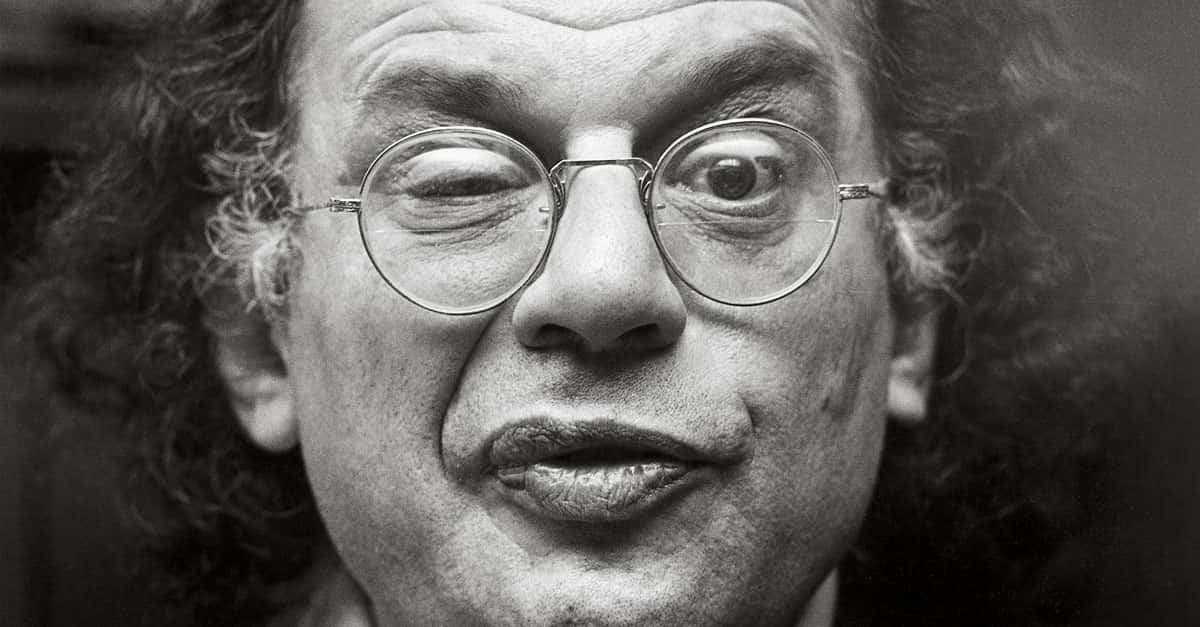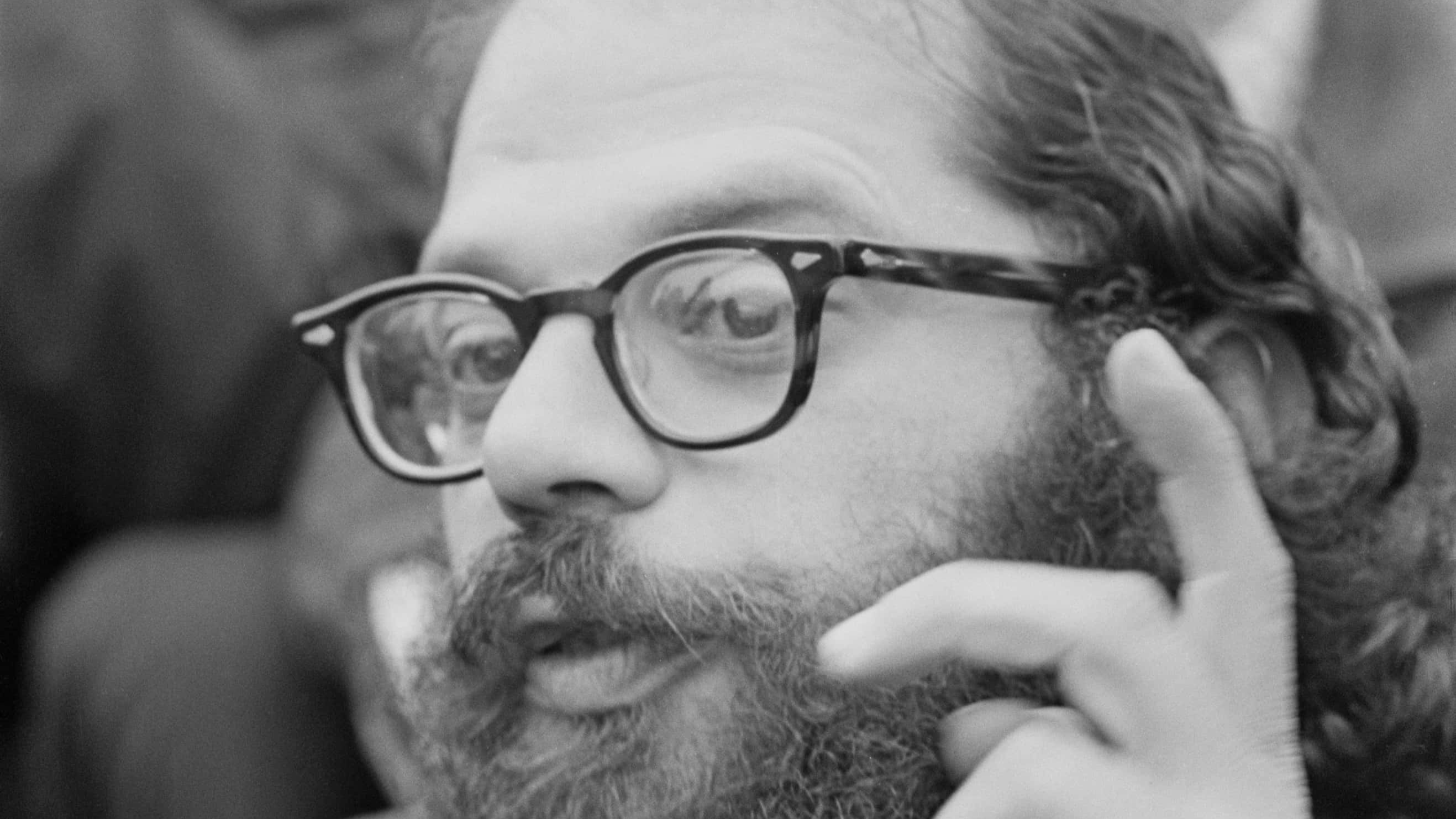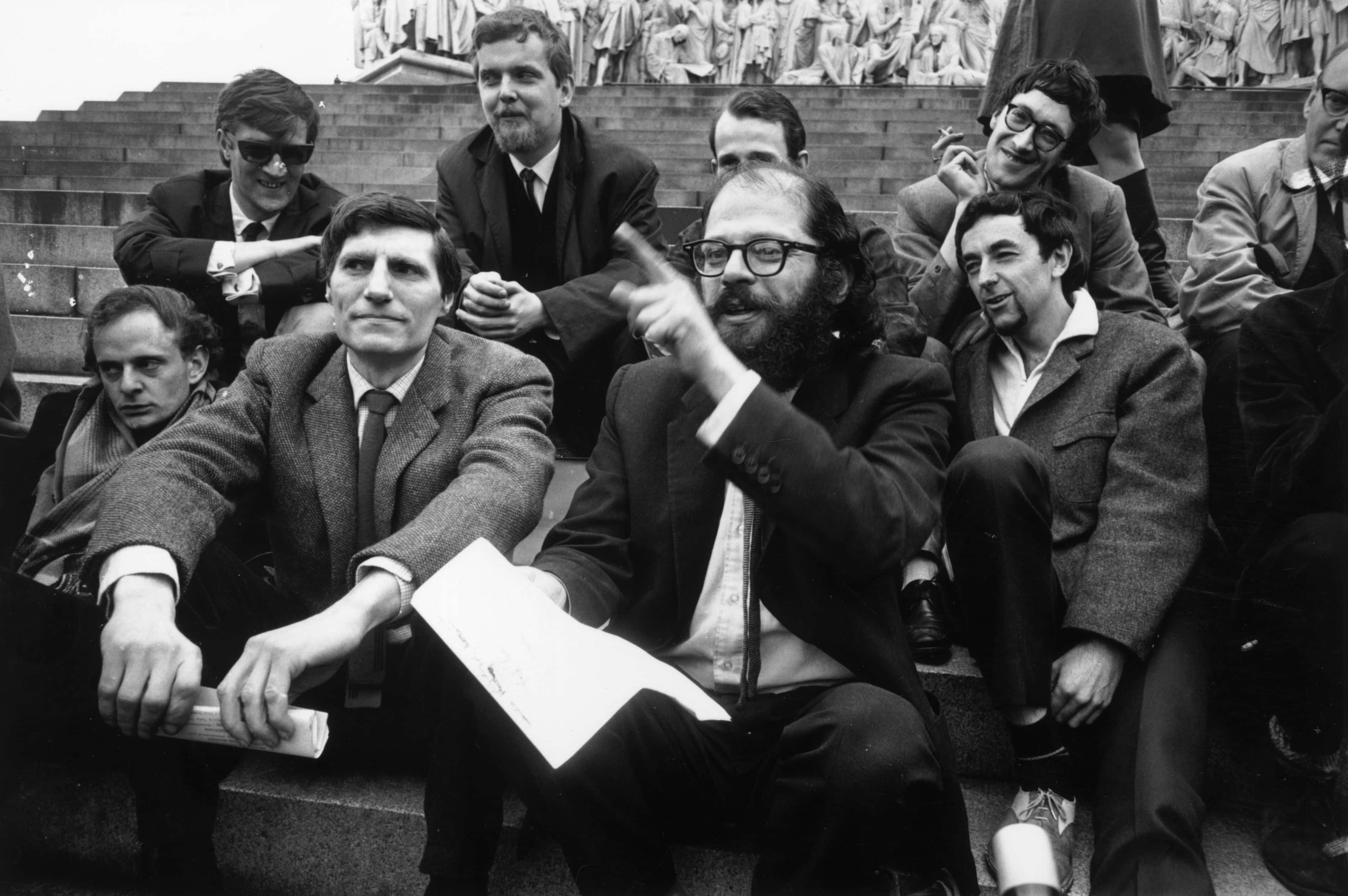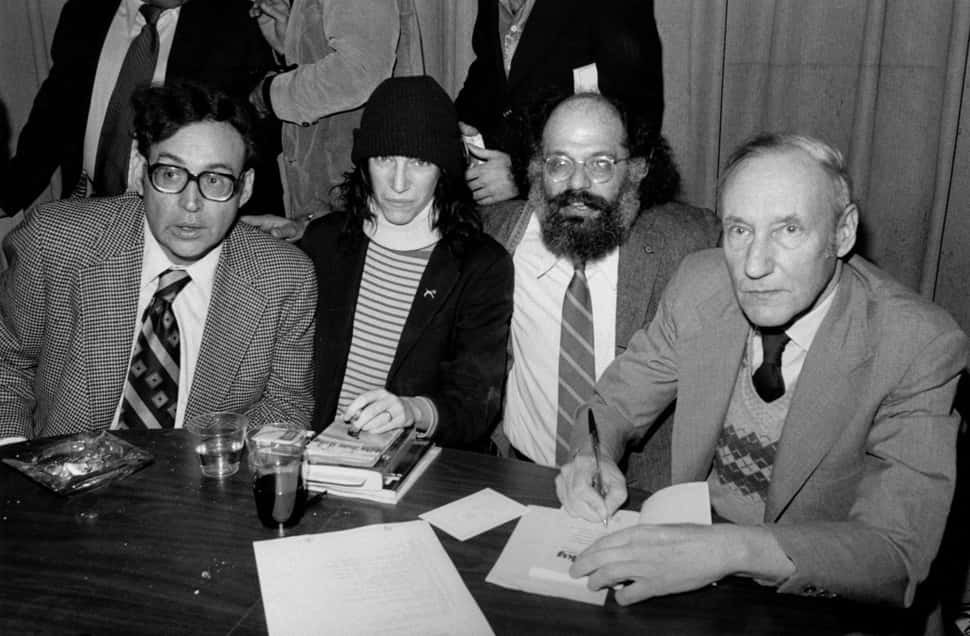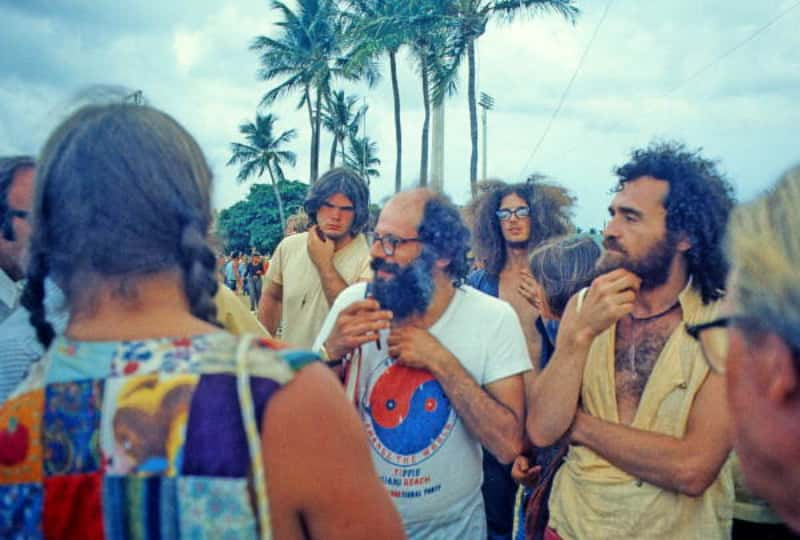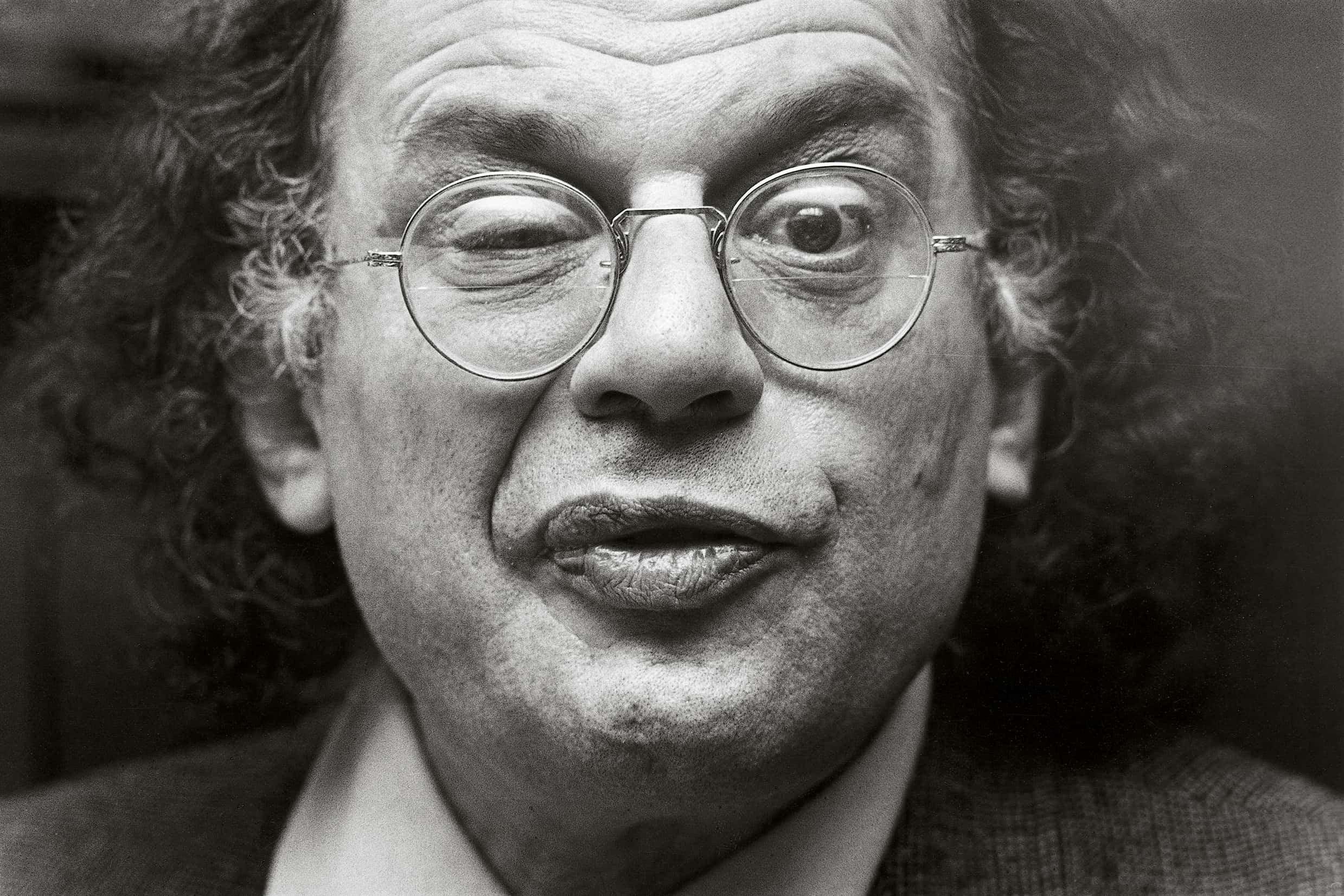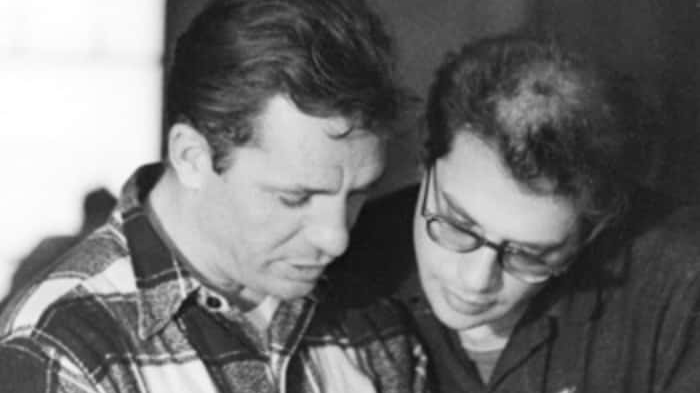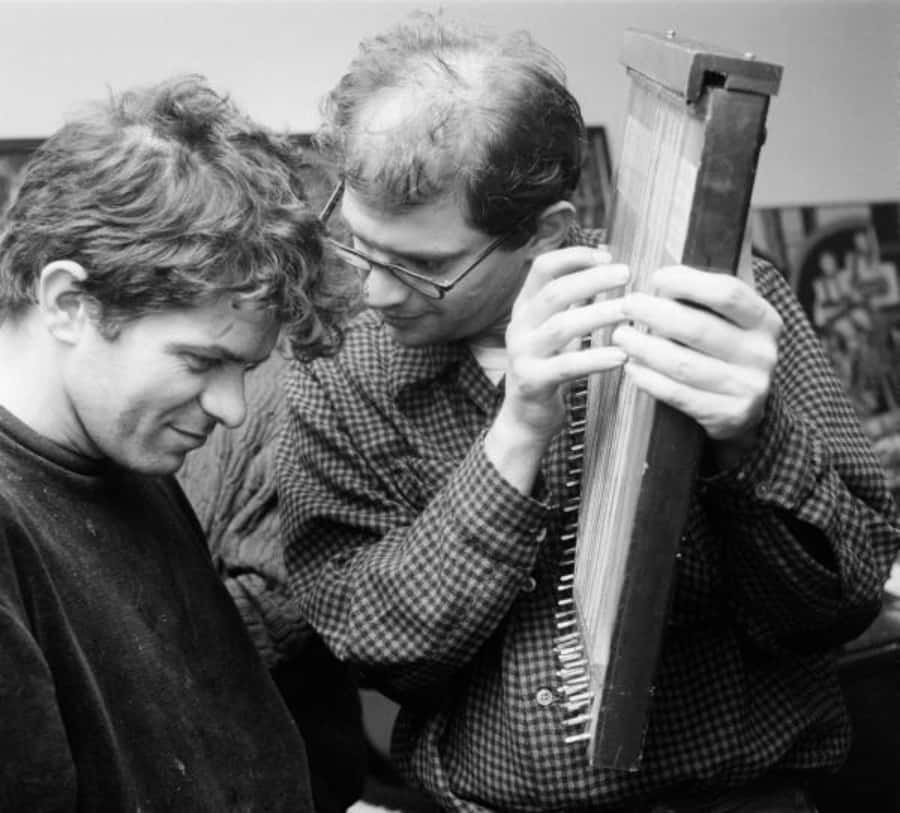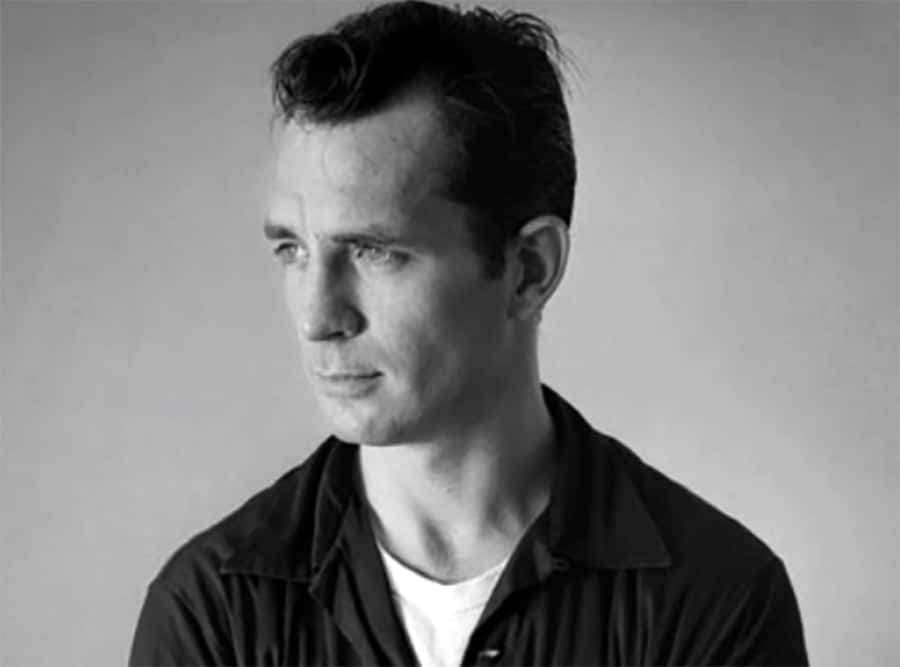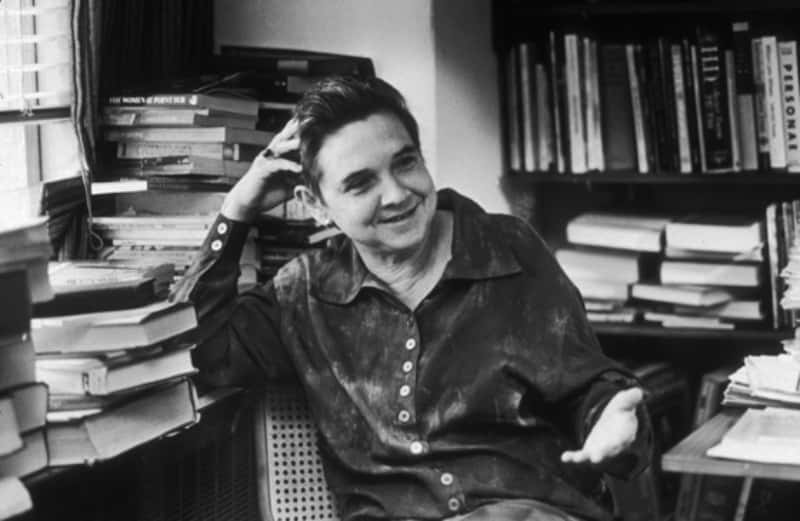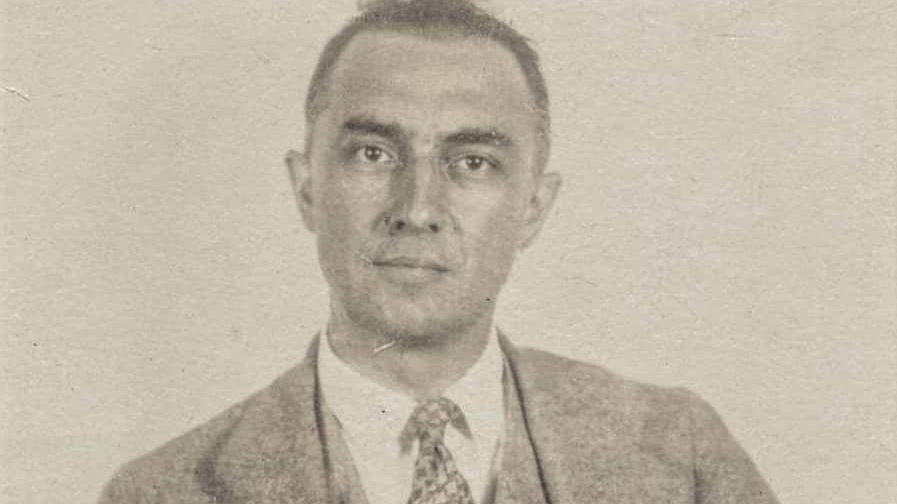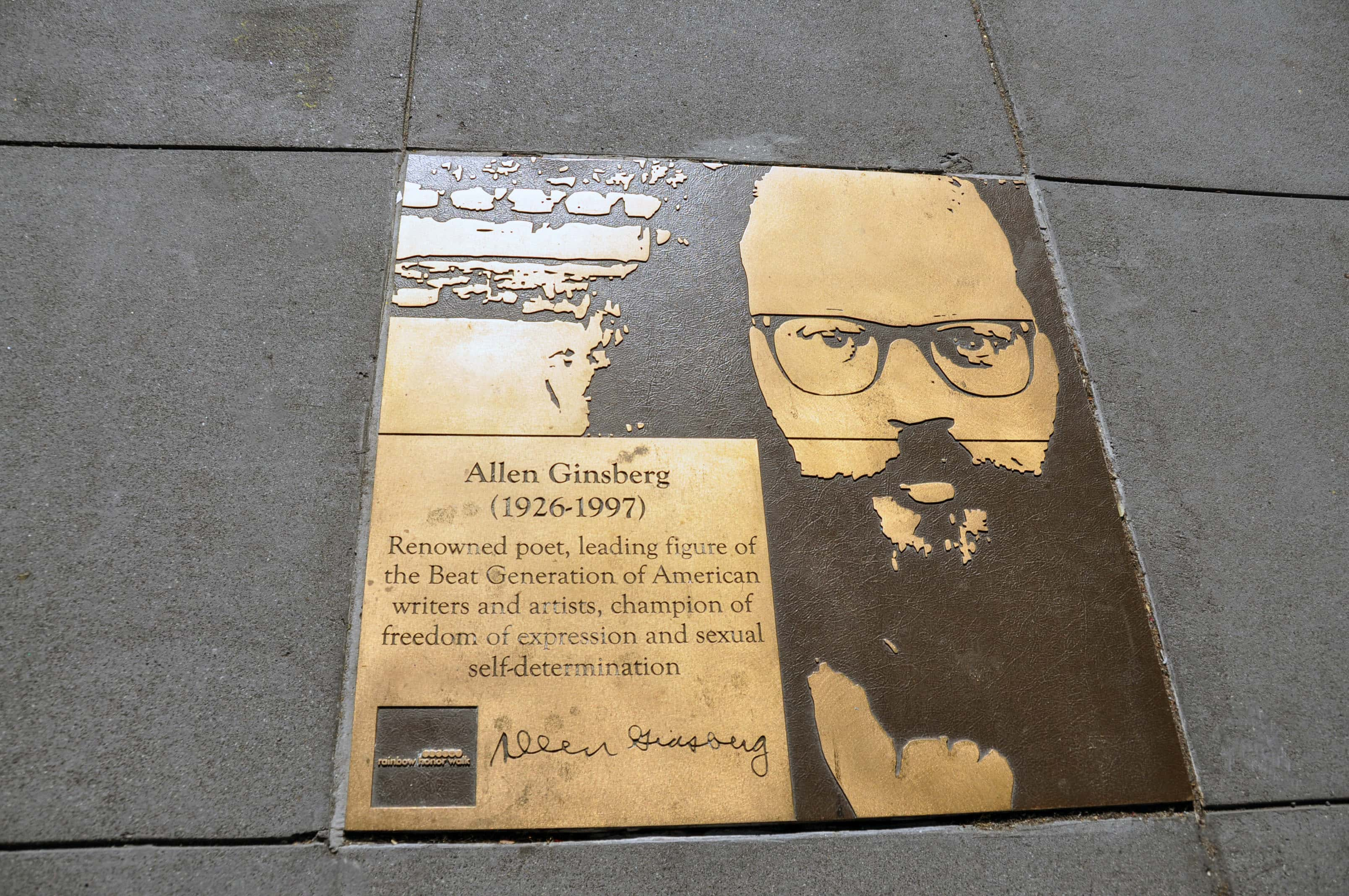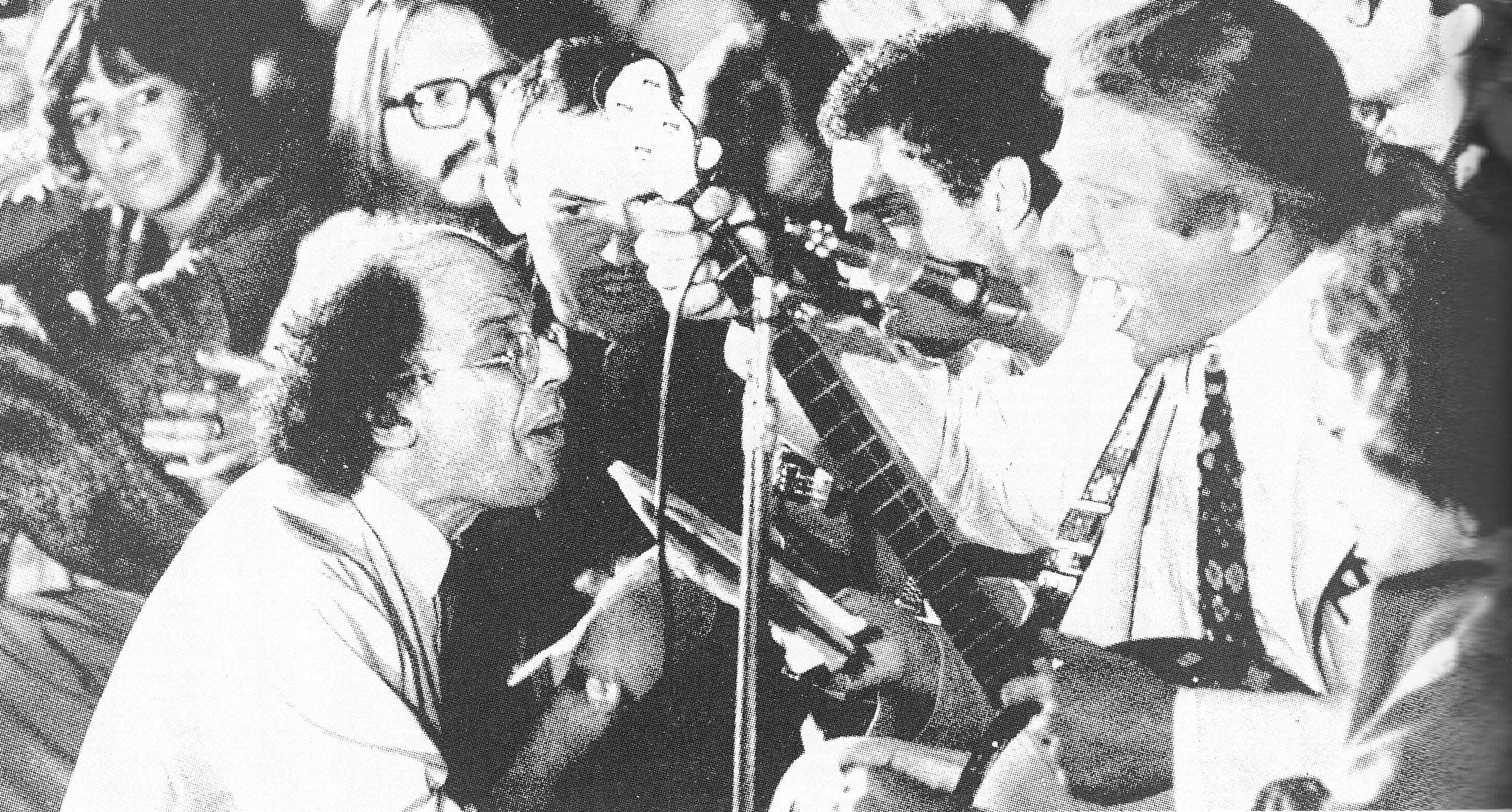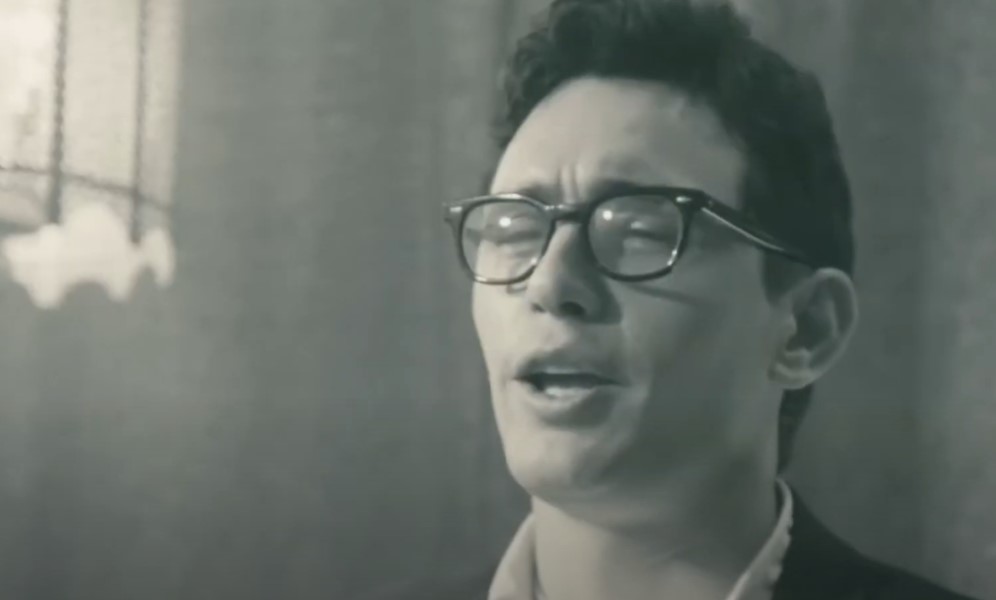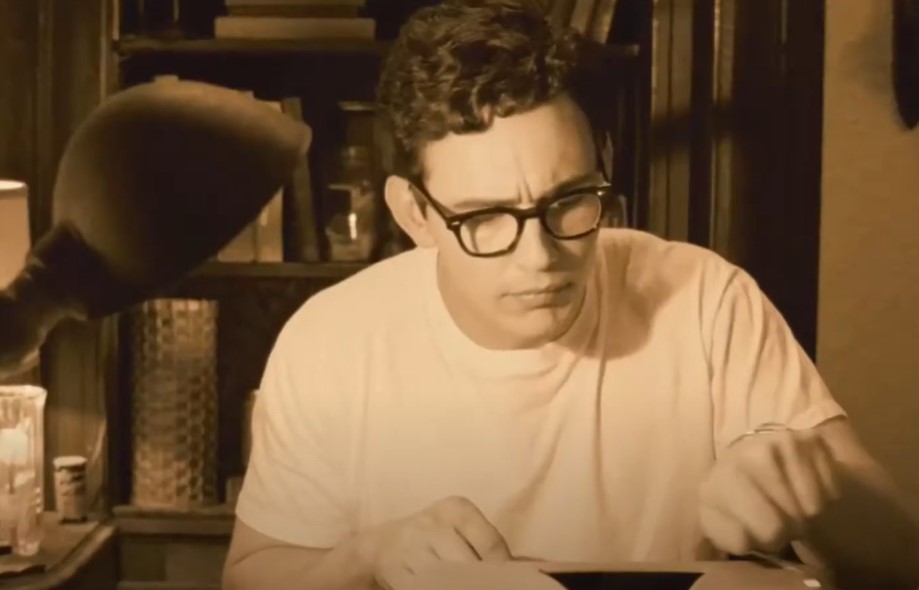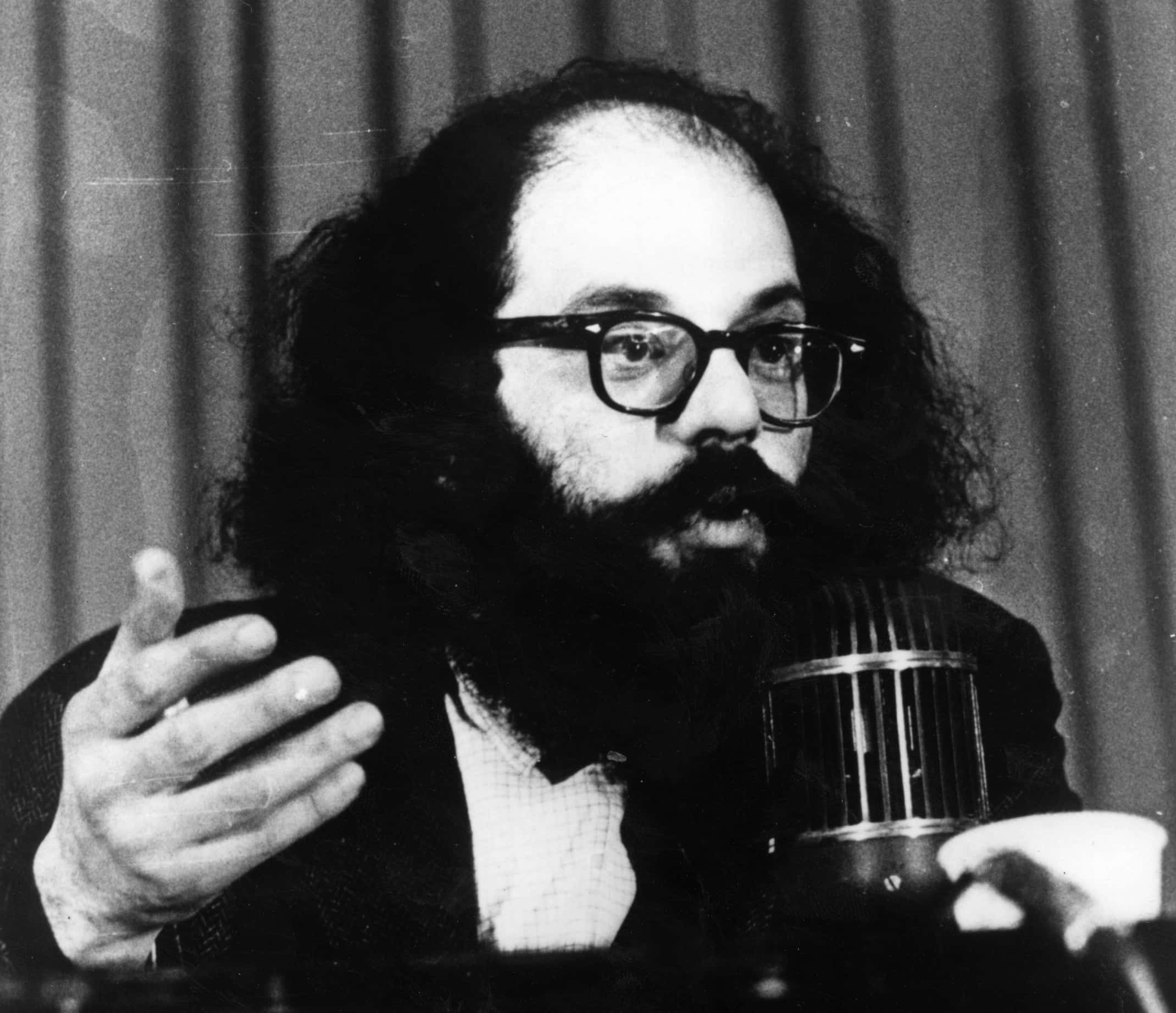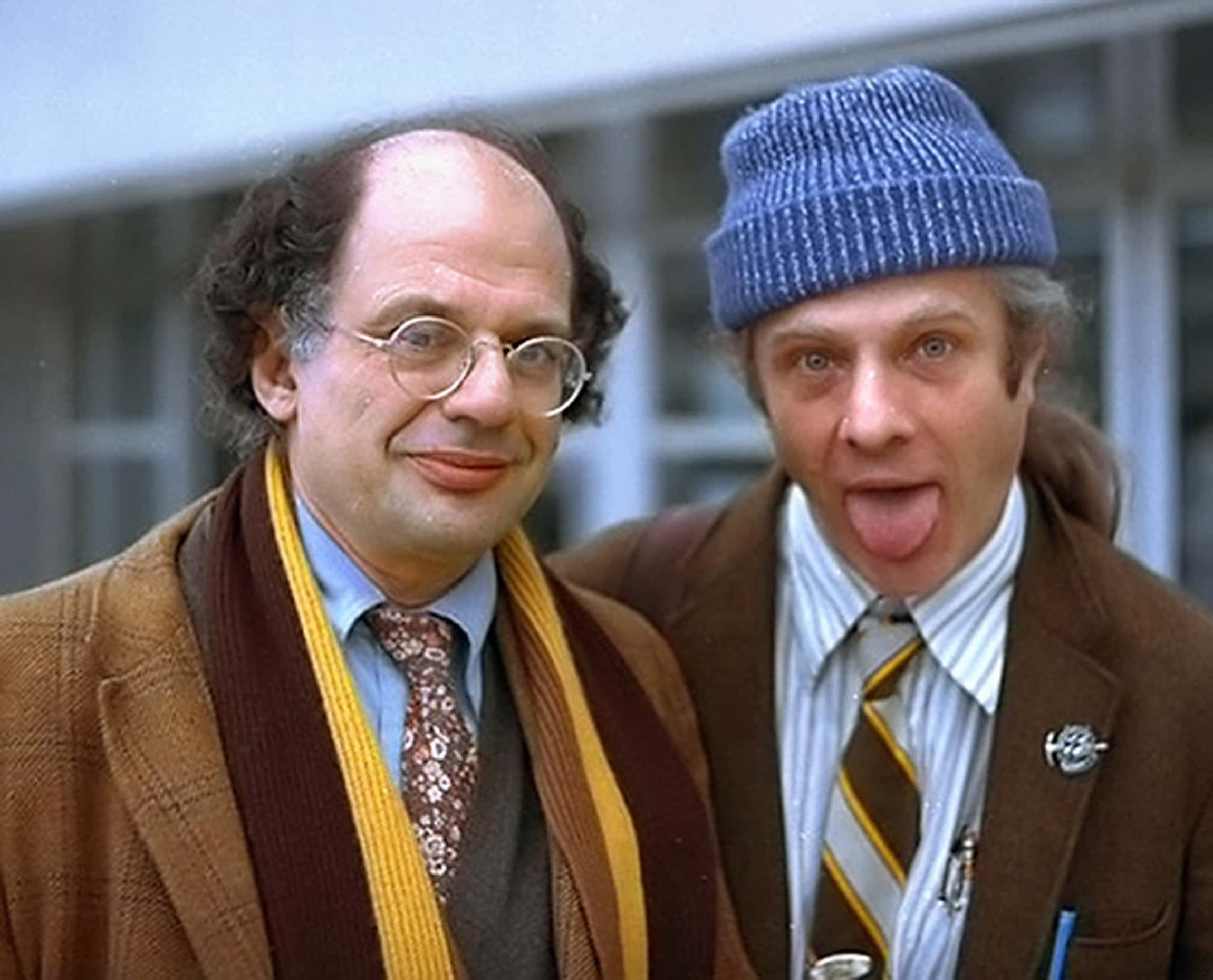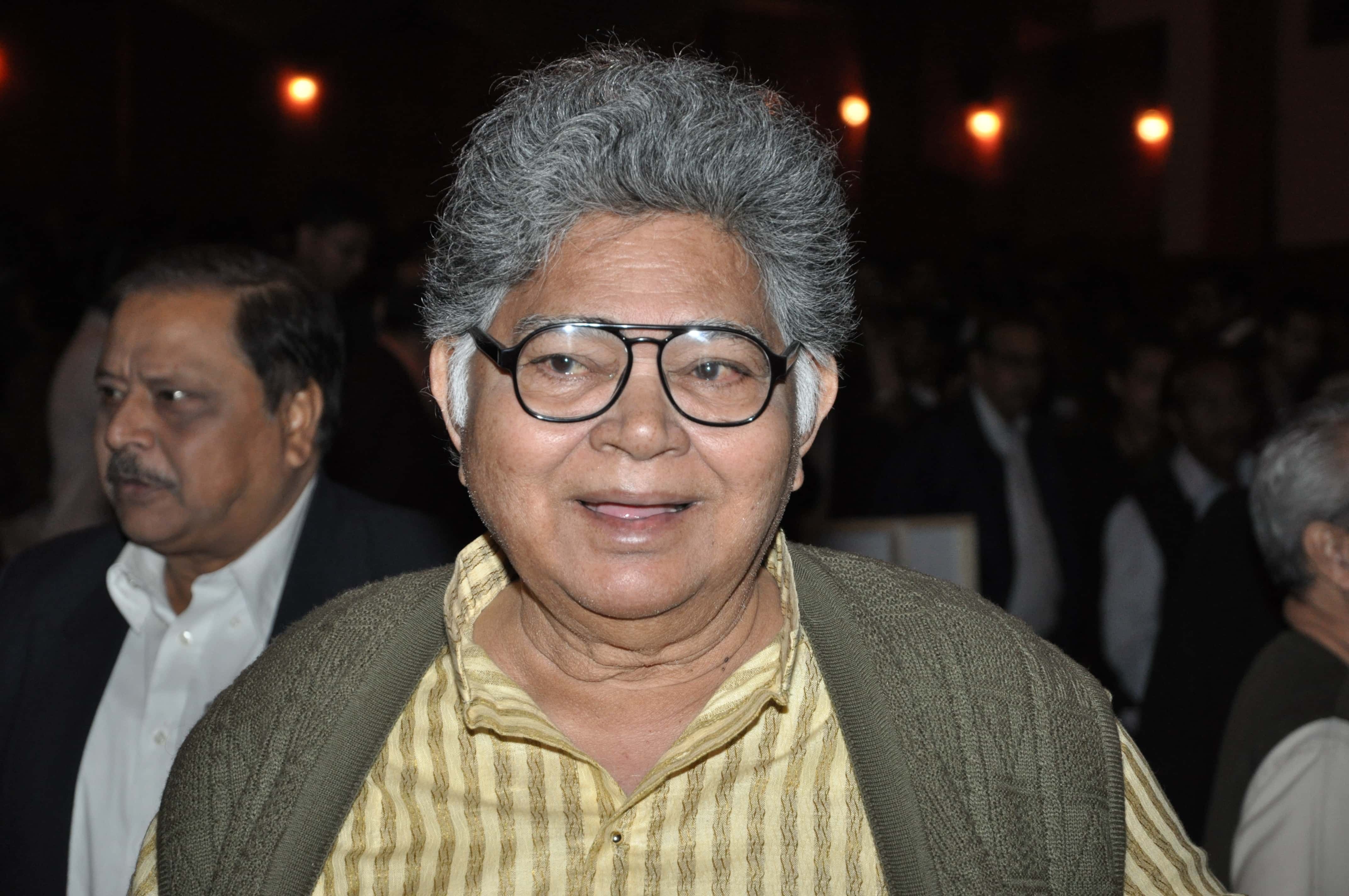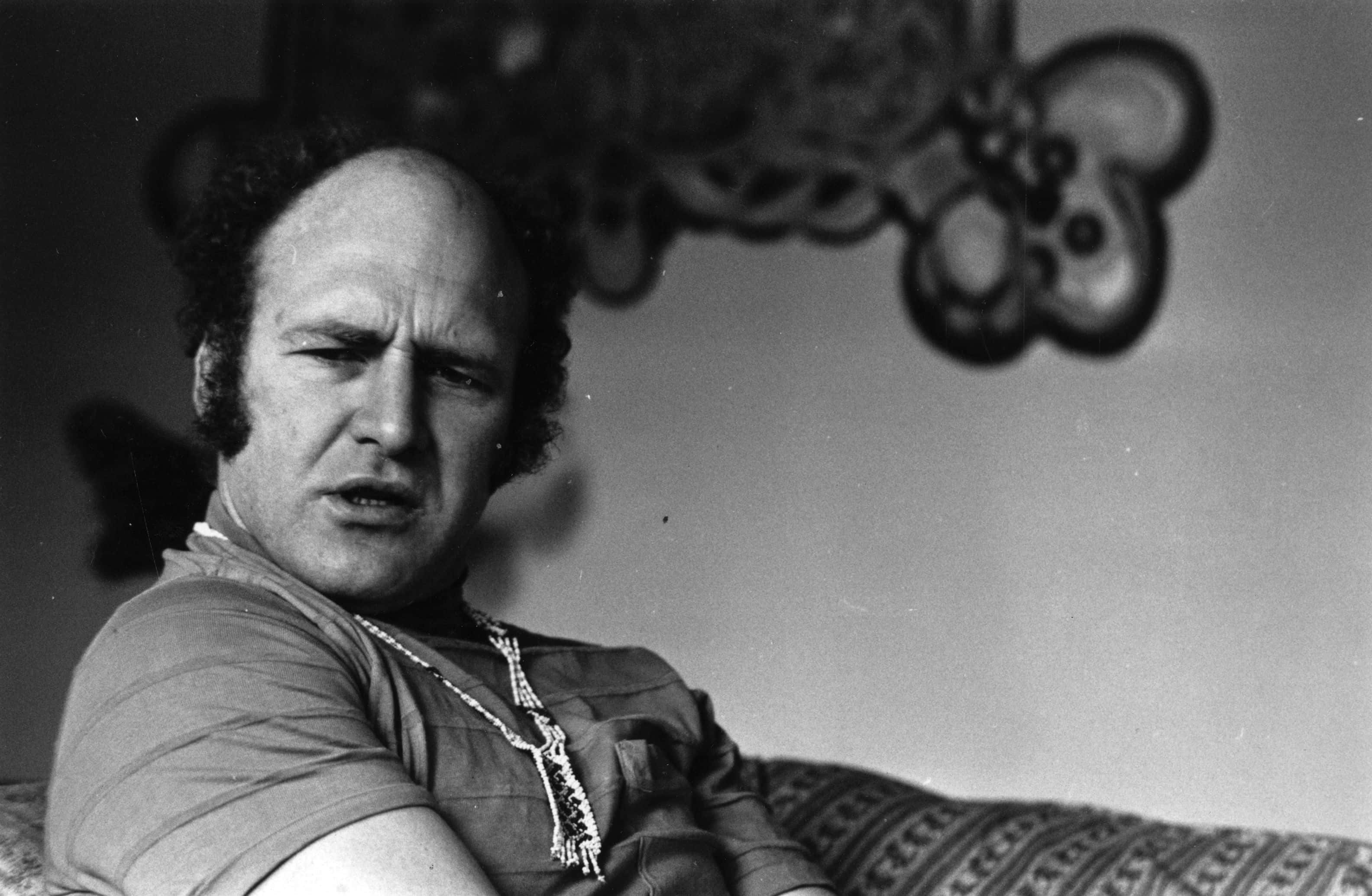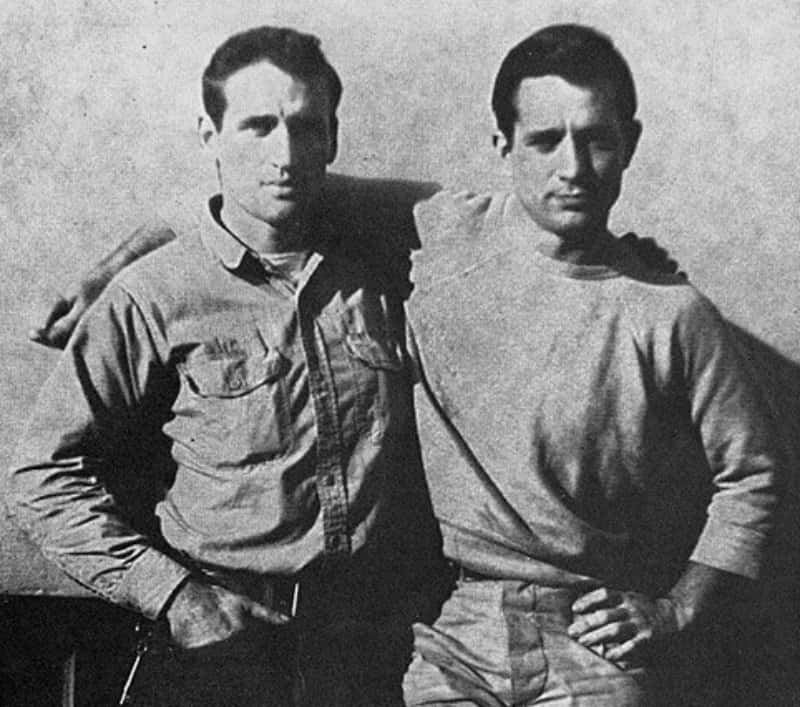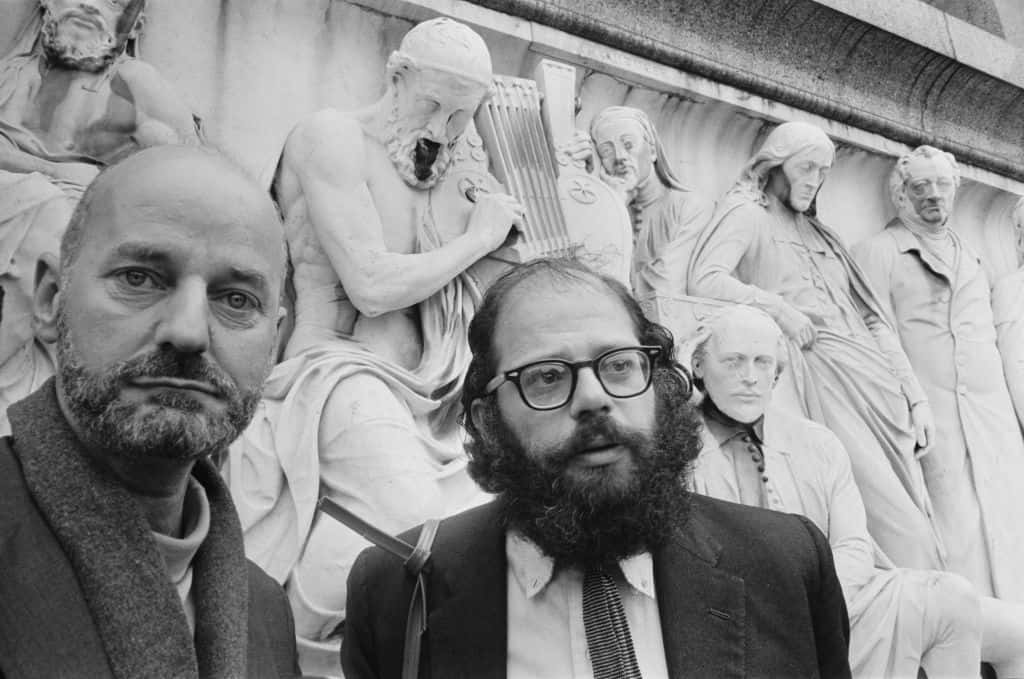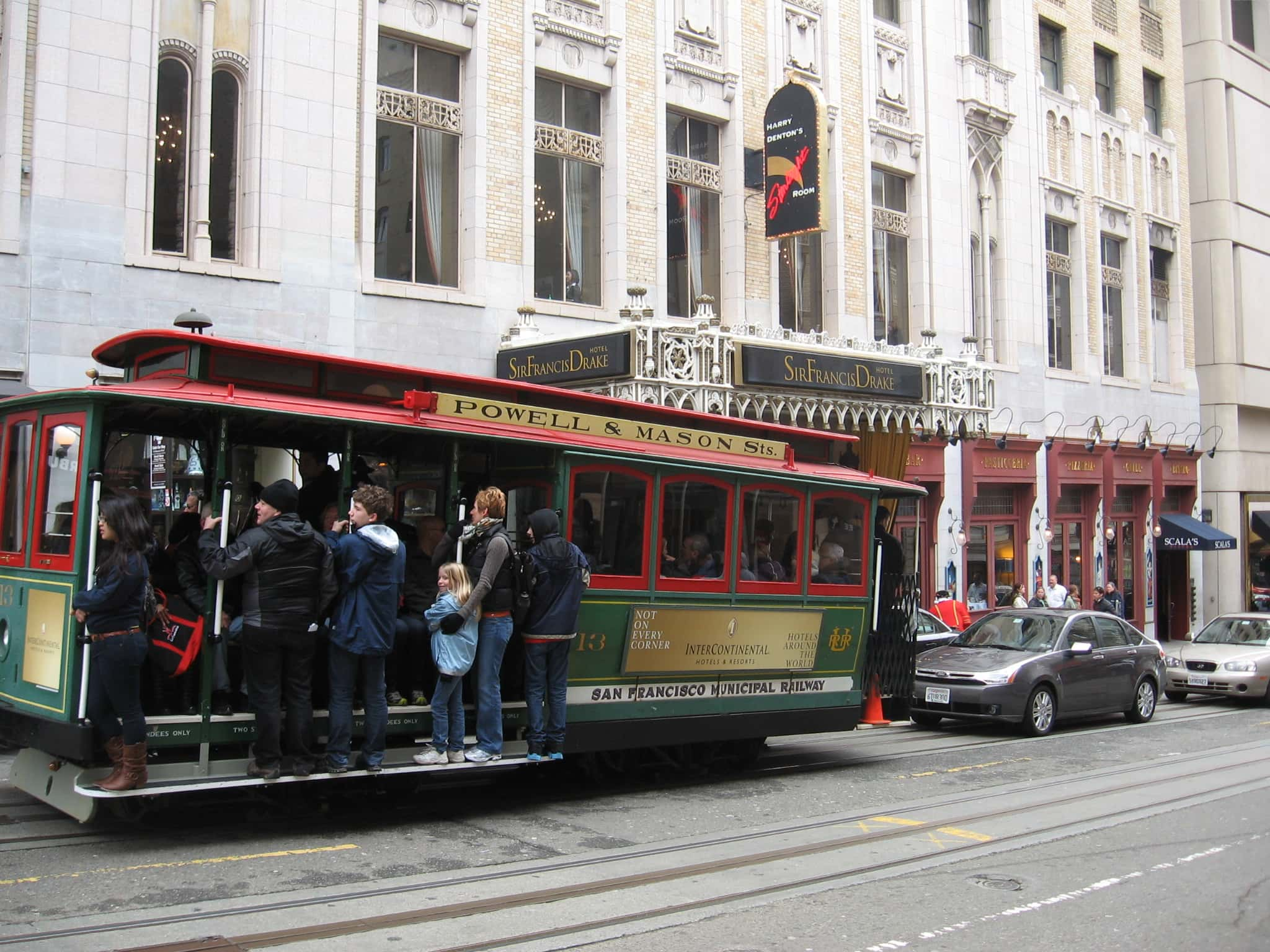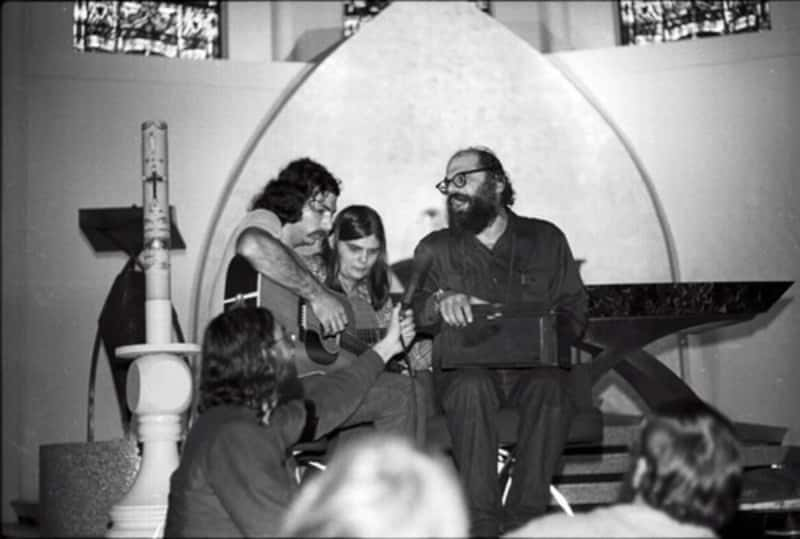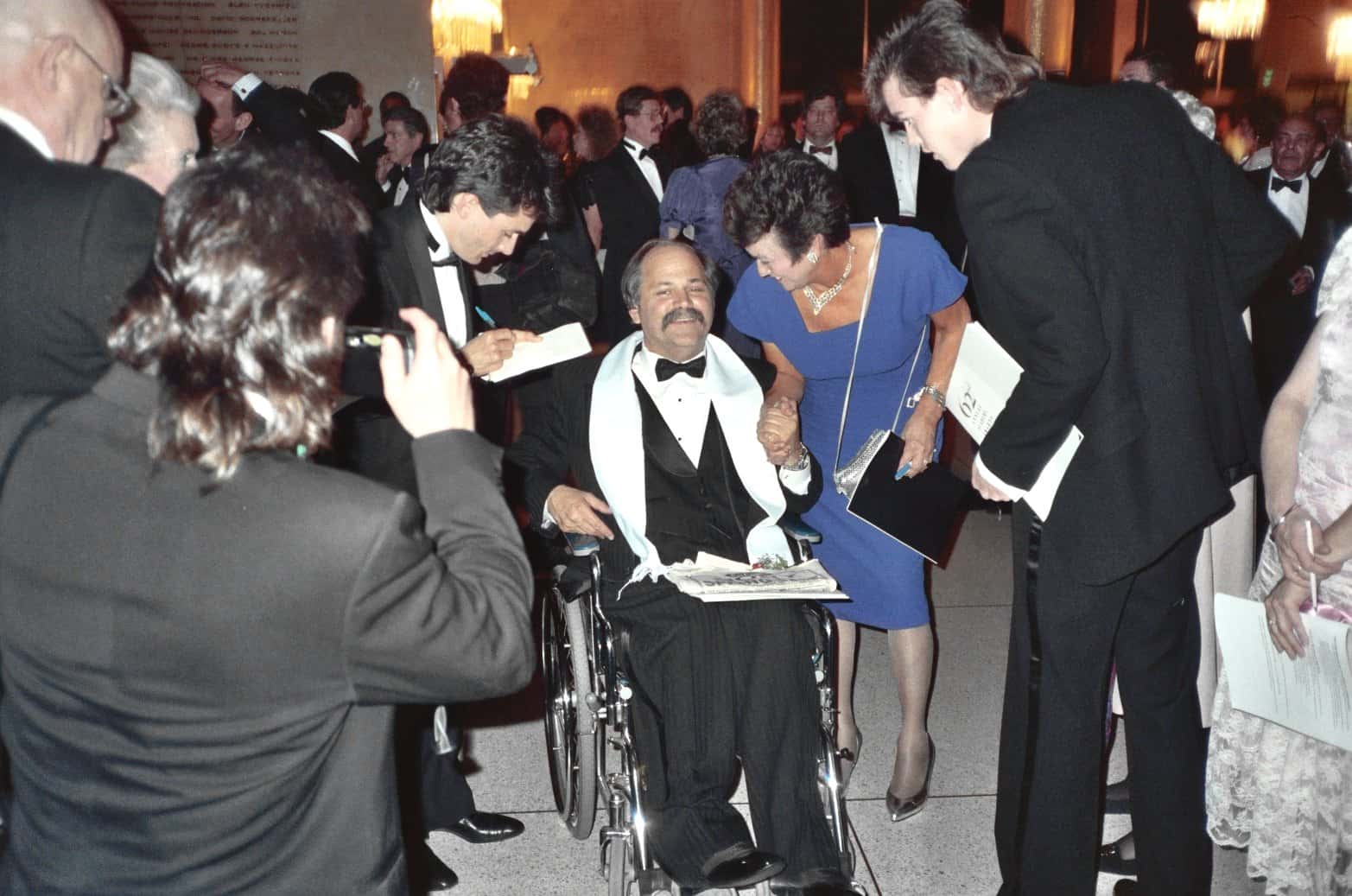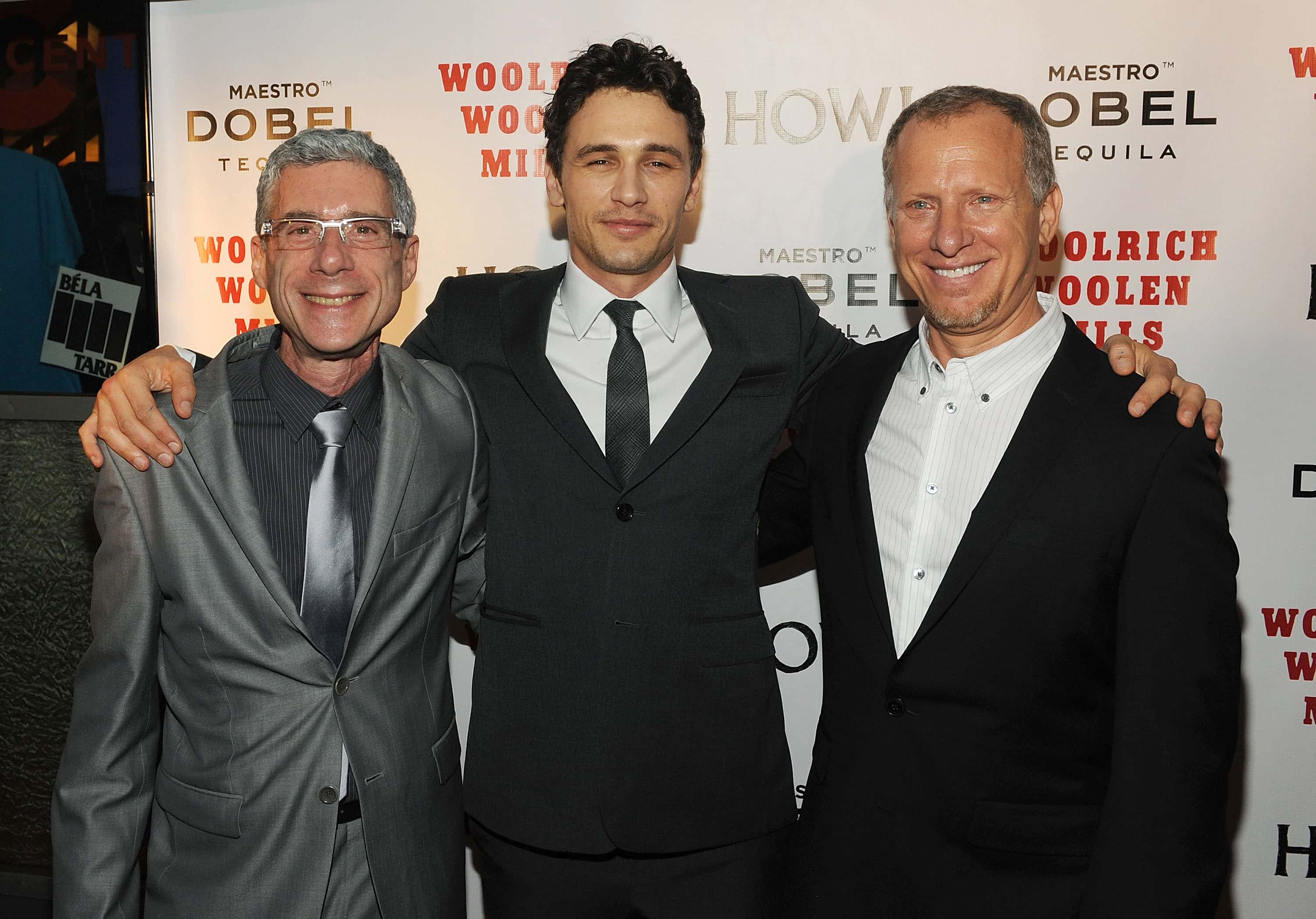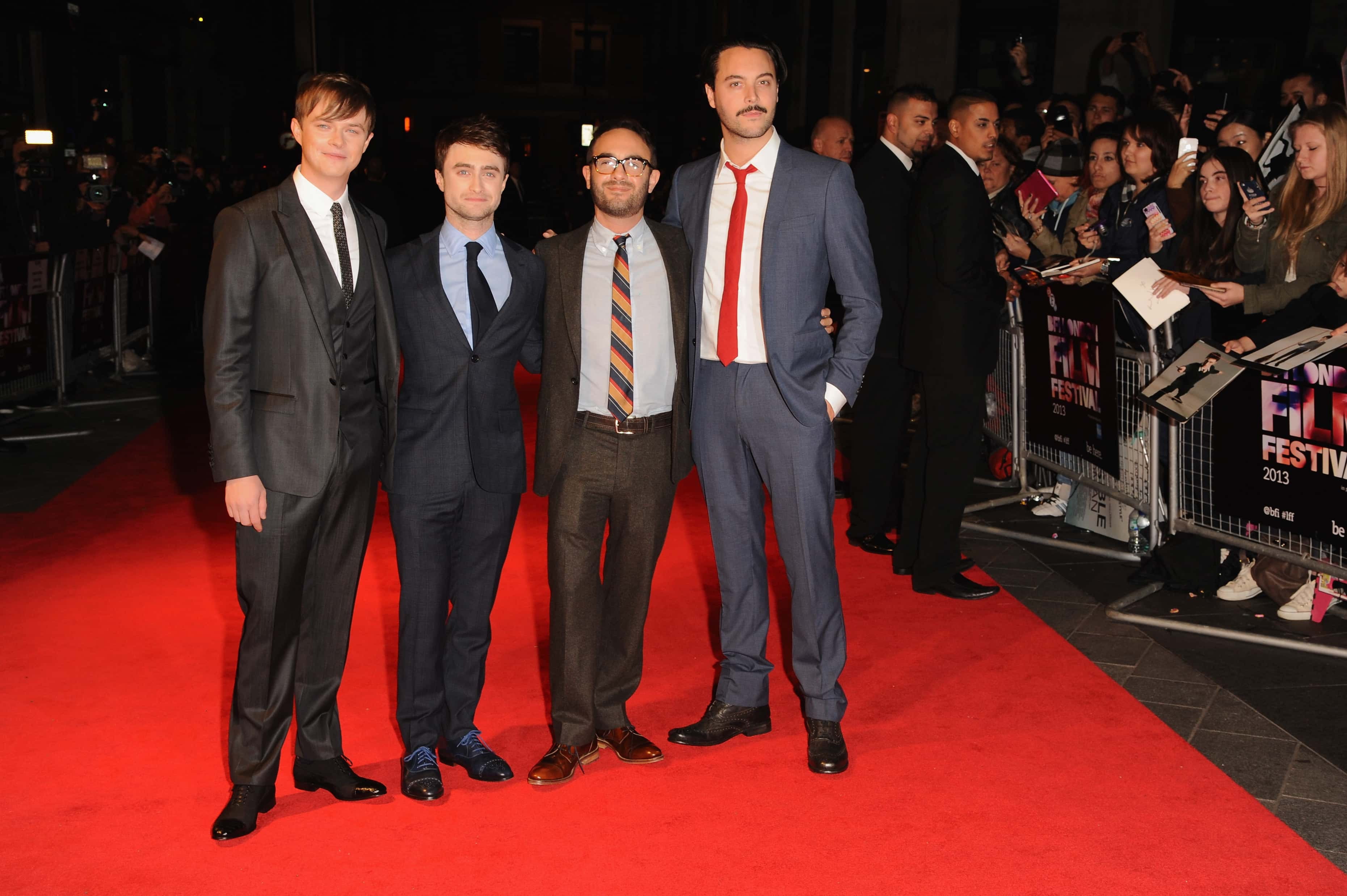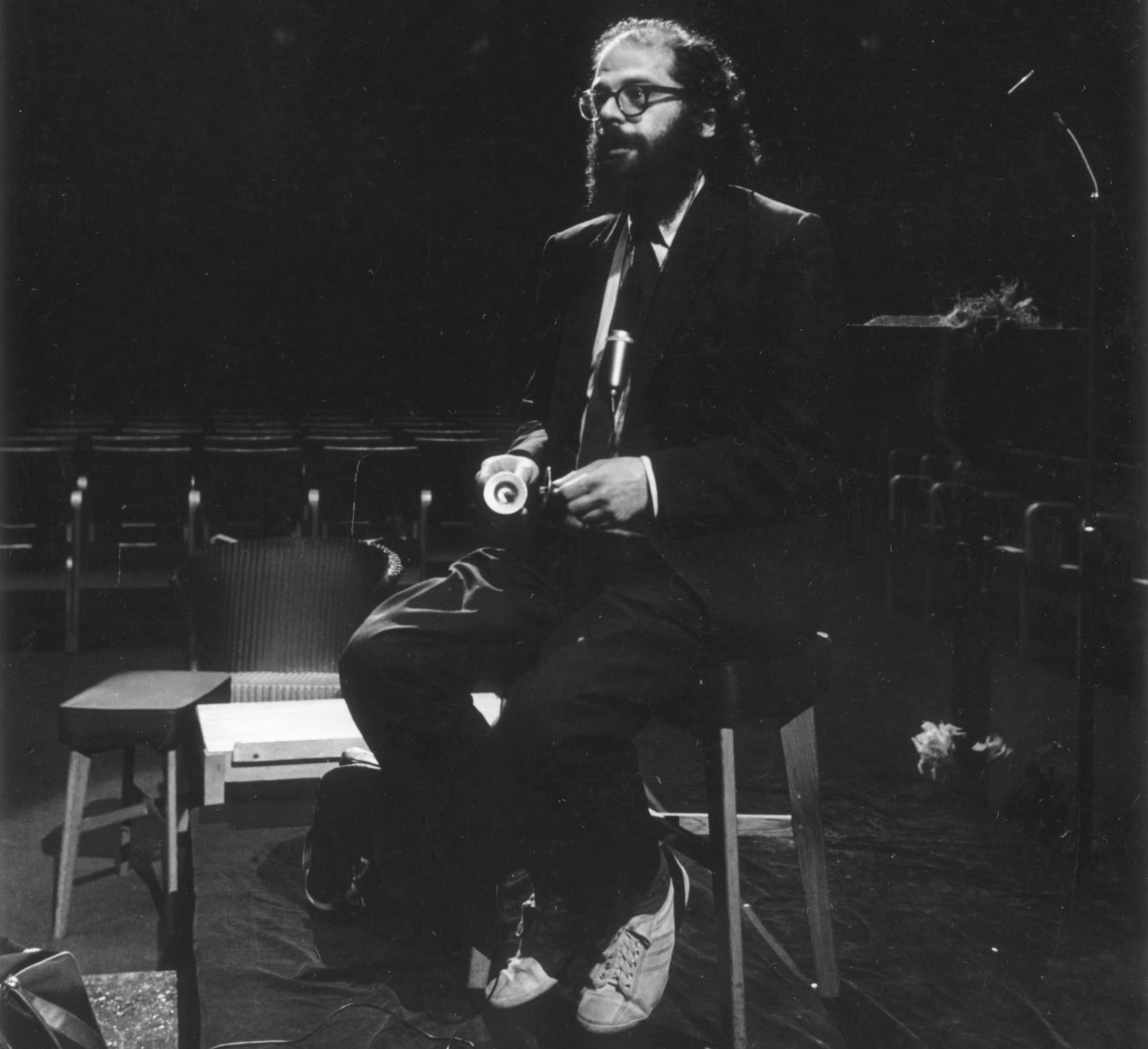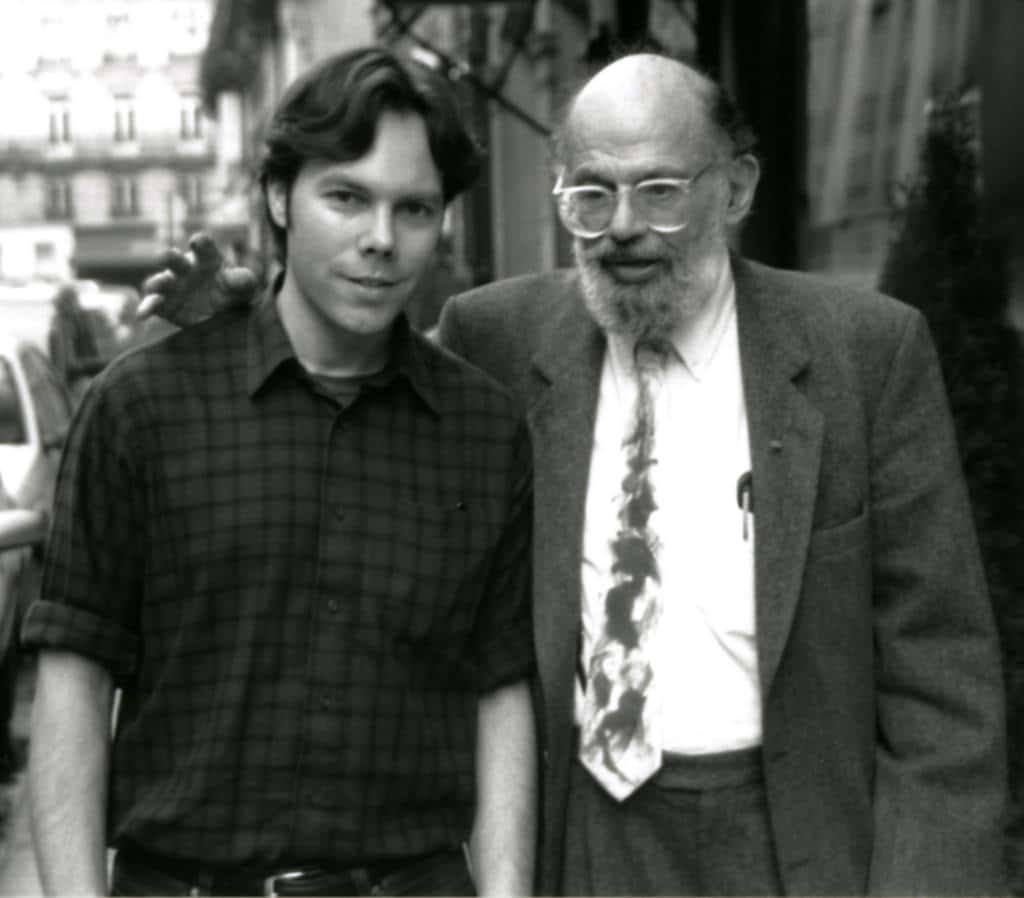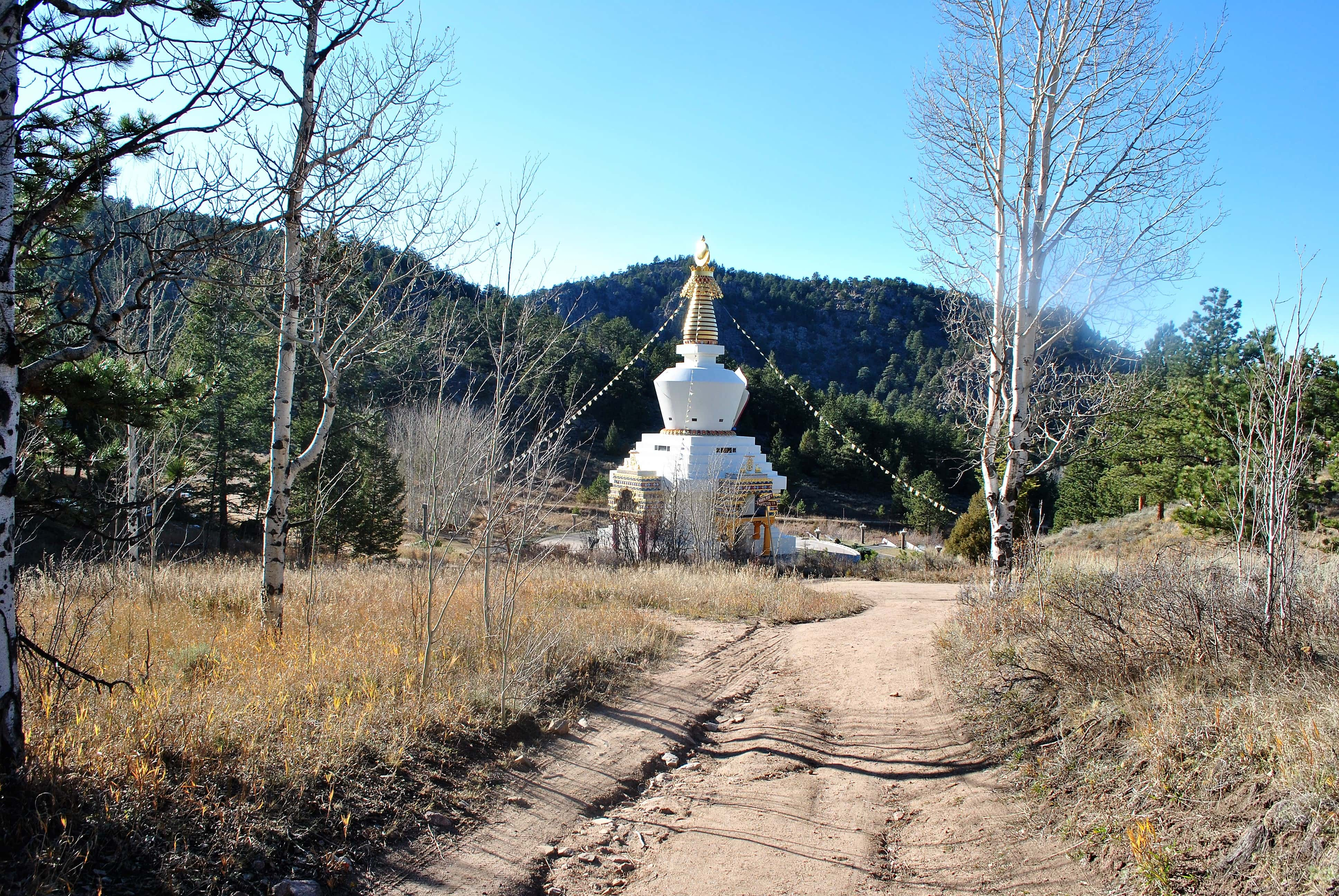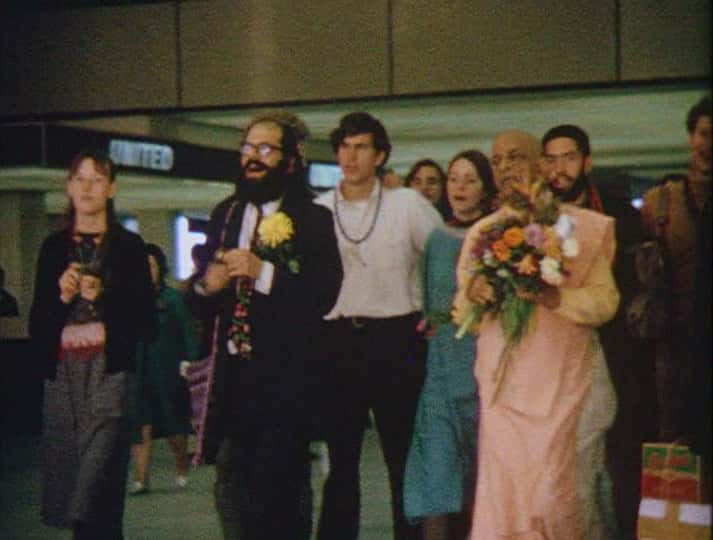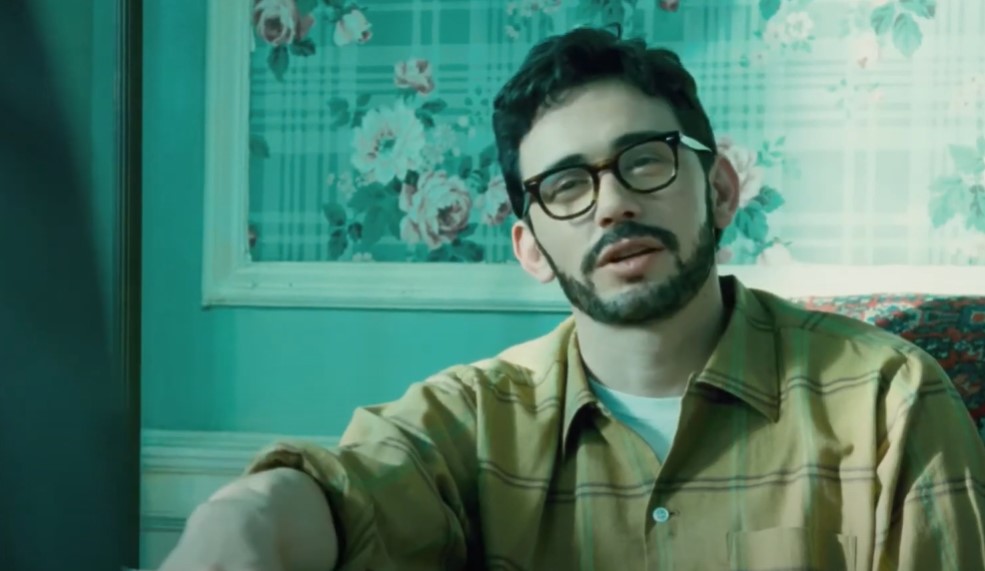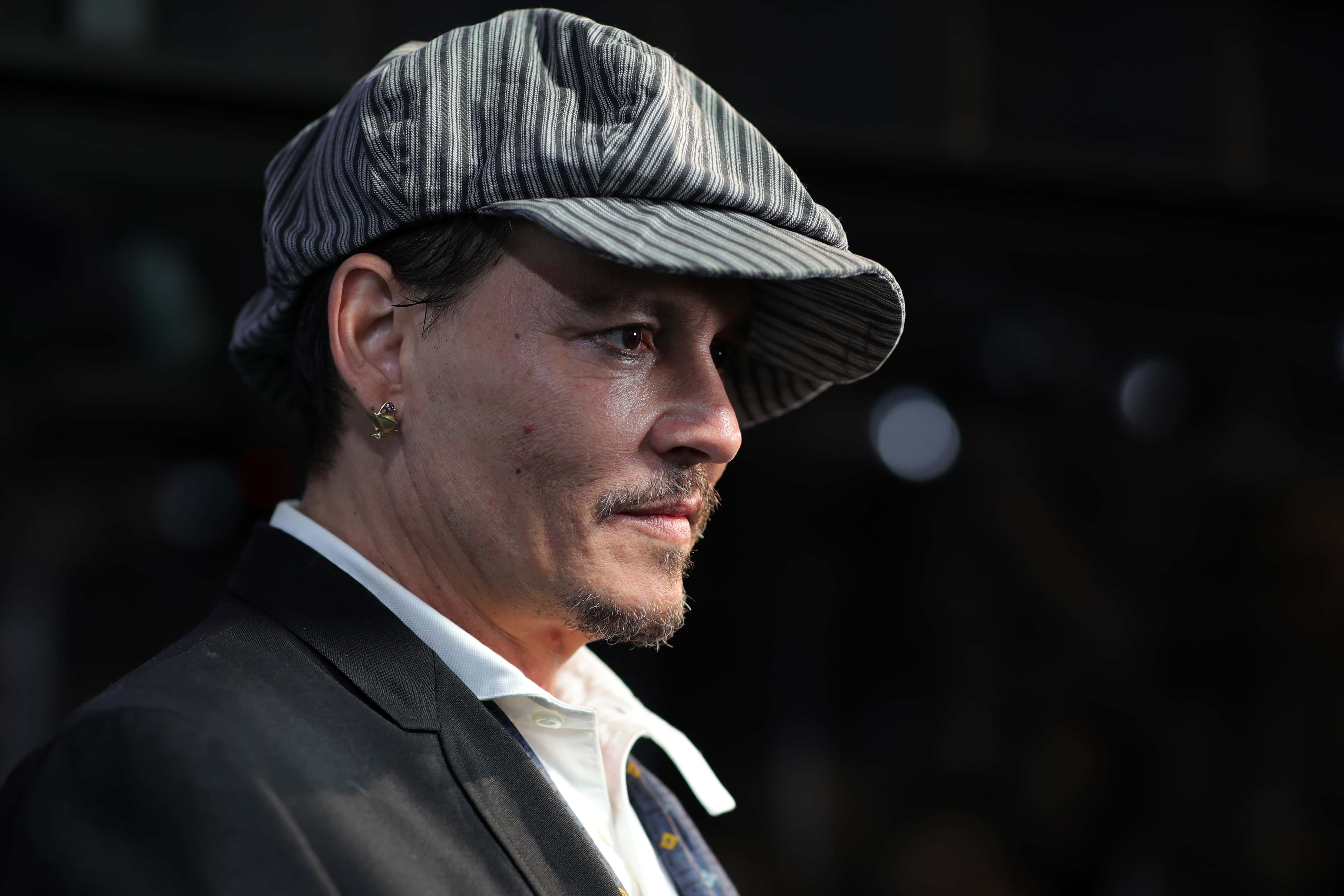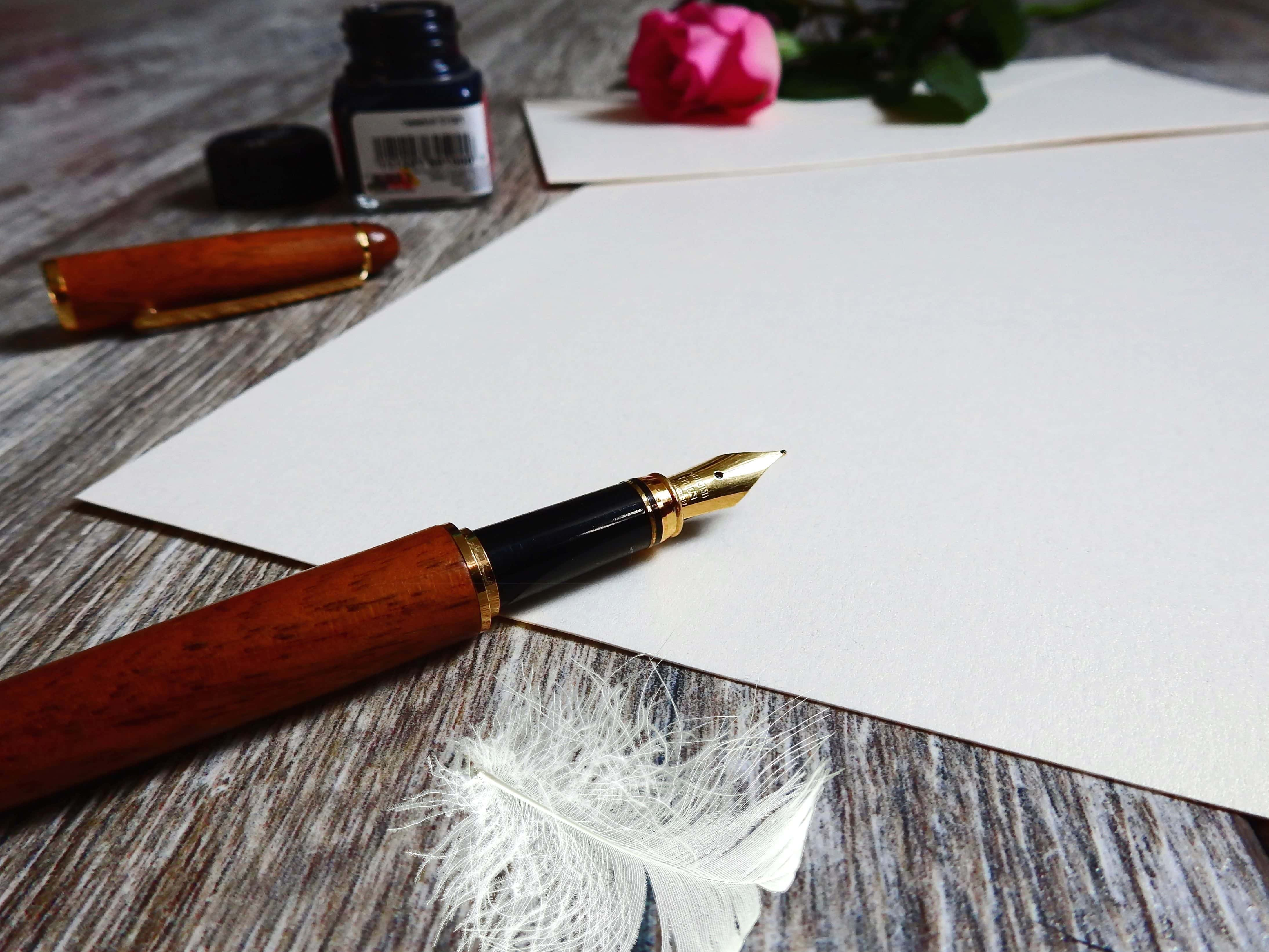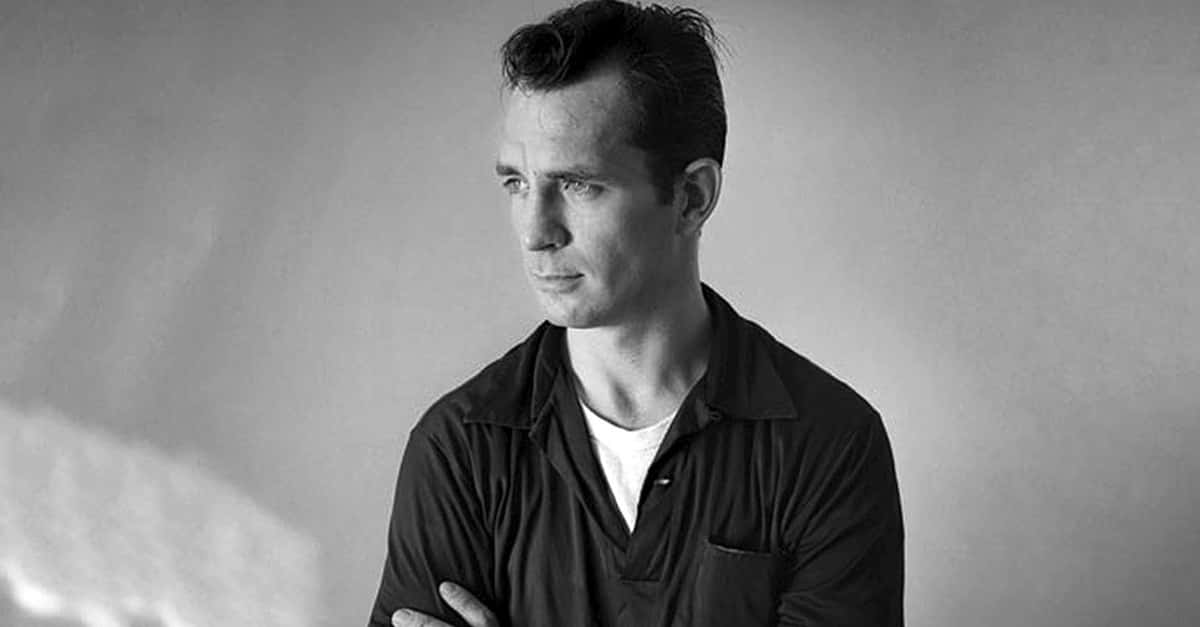Before the sexual liberation of the 1960s, Allen Ginsberg was defying society’s expectations with his bohemian lifestyle and powerful poetry. He became known as one of the iconic members of the Beat Generation, along with Jack Kerouac, William S. Burroughs, and several others. Together, they created a space outside of the status quo and inspired generations of countercultural artists. Read the facts below and discover more about Allen Ginsberg.
Allen Ginsberg Facts
42. Where and When it All Began
Ginsberg was born in Newark, New Jersey on the 3rd of June 1926. He was the second son of Louis and Naomi Ginsberg, the first being his older brother Eugene (who also became a poet).
41. Reverse of a British Invasion
In the spring of 1965, Ginsberg traveled to the UK and offered to read anywhere in London free of charge. He ultimately went to an independent bookstore called Better Books and gave a reading which was described by English artist Jeff Nuttall as being “the first healing wind on a very parched collective mind.”
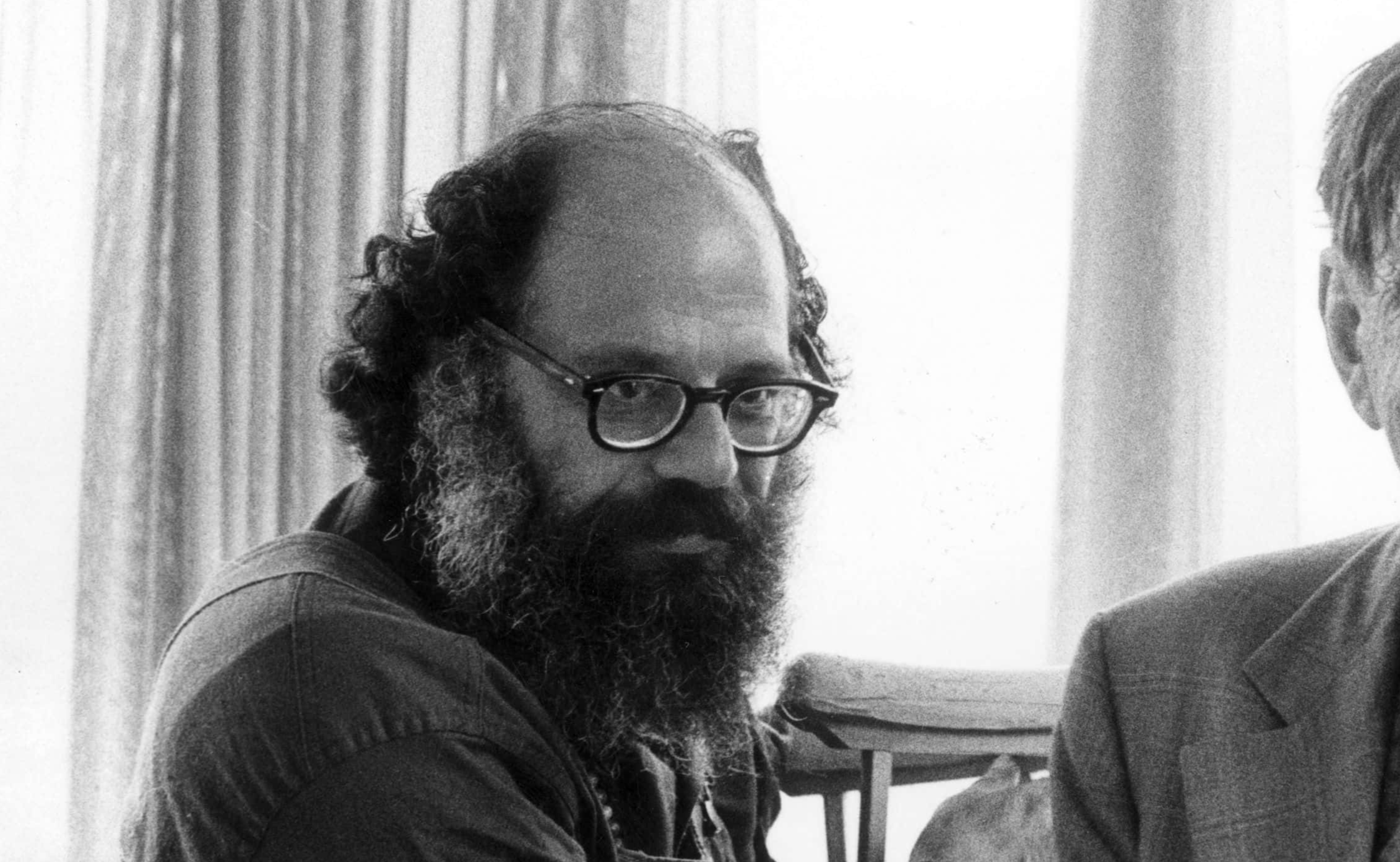 Getty Images
Getty Images
40. “I Saw the Best Minds of My Generation Destroyed by Madness”
To give further context for the Beat Generation, they were a small group of young people who lived on the fringes of 1940s and 1950s society. These Beats, as they were called, were writers of poetry and prose who went against traditional styles of art. This led to some of their works like William S. Burroughs’ novel Naked Lunch or Ginsberg’s poem “Howl” being challenged in court for obscenity. Many of the Beats were further marginalized because of their mental health problems or non-heterosexual identities. Ginsberg fit both those categories, as it happens.
39. I’m With You in Rockland…
In 1949, Ginsberg was found in possession of stolen goods and arrested. Instead of prison, however, Ginsberg spent months in a mental institution. It was while institutionalized that he would meet Carl Solomon, a fellow writer. Solomon and his plight as a patient of institutions reminded Ginsberg of his mother. Solomon left such an impression on Ginsberg that he dedicated his epic poem “Howl” to Solomon, and repeatedly addressed Solomon directly in the “Rockland” section.
Solomon’s real life is also referenced in earlier lines of the poem, regarding an unnamed person "...who threw potato salad at CCNY lecturers on Dadaism and subsequently presented themselves on the granite steps of the madhouse with shaven heads and harlequin speech of suicide, demanding instantaneous lobotomy."
38. One Pseudonym of Many
Ginsberg’s friendship with Jack Kerouac meant that he would inspire several characters in Kerouac’s novels (given how Kerouac so often mined his personal life for his art). The most famous of these thinly veiled portrayals was in On the Road, where Ginsberg is portrayed under the name “Carlo Marx.” Marx would later be portrayed by Tom Sturridge in Walter Salles’ 2012 film adaptation of On the Road.
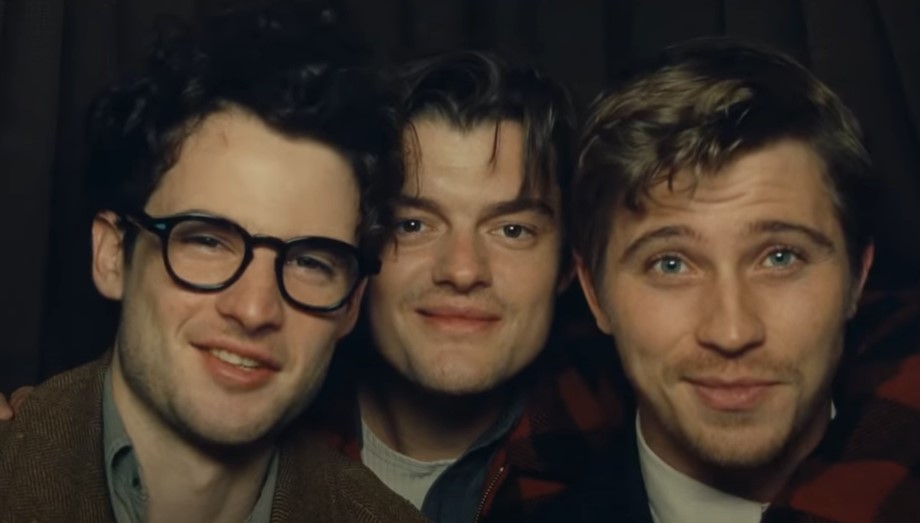 MK2 Productions, On the Road (2012)
MK2 Productions, On the Road (2012)
37. My Magnum Opus
Ginsberg first began writing his best-known work, “Howl,” in 1954, though it would not be published until the following year (we can’t be surprised, given how long the poem is). “Howl” was published in San Francisco by Lawrence Ferlinghetti, through his iconic City Lights Bookstore. City Lights would continue to publish Ginsberg’s work for years after that.
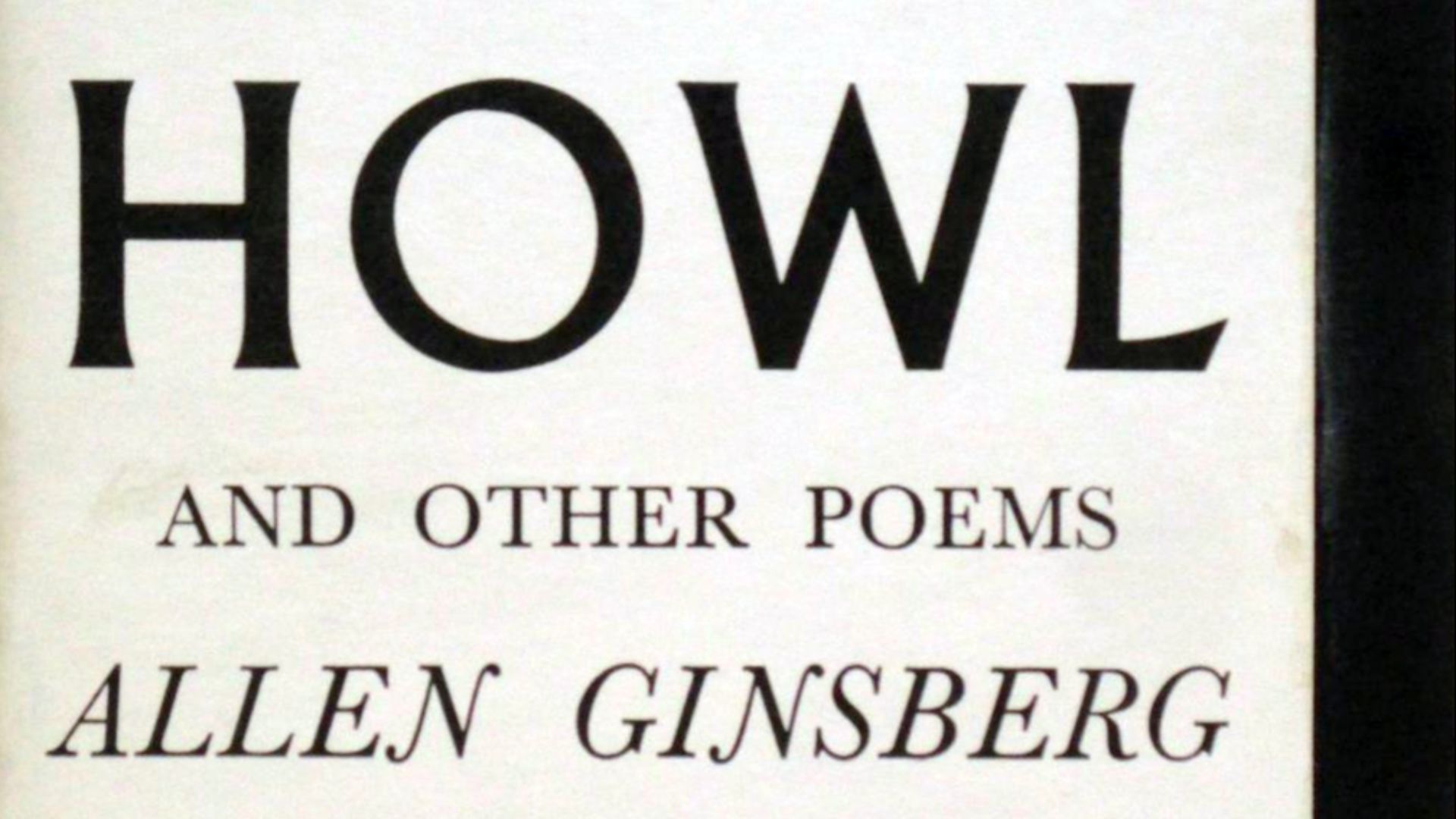 Lawrence Ferlinghetti (source), Wikimedia Commons
Lawrence Ferlinghetti (source), Wikimedia Commons
36. You Can’t Label Me!
For all that he was a passionately left-wing from a political standpoint, Ginsberg would become alienated from several nations which were labeled as being Communist. When he found himself on the wrong side of Fidel Castro’s anti-marijuana and anti-LGBTQ stances, Ginsberg was deported from Cuba. From there, the Cubans sent him to Czechoslovakia, where he spent a week before being arrested for drug use and deported again. Ginsberg would ruefully reflect that these nations would initially welcome him because of his shared anti-capitalist feelings, but then be repulsed by him when he didn’t fit their standards.
35. Good Old Dad
Ginsberg’s father, Louis, worked as a secondary school teacher. However, he was also a noted poet in his own right. His poems appeared in many American newspapers such as The Nation, The New York Times, and The New Republic. Less known about him was his fondness for puns, the most famous being his statement “Is life worth living? It depends on the liver.” Before you curse his name too harshly for that dad joke, the sad twist was that Louis would later be diagnosed with liver cancer. He was in on the irony, though—he reportedly told his son, “I never thought my pun would come back to bite me.” Sadly, he would succumb to his cancer in 1976.
34. Holy Lucien
Ginsberg was enrolled at Columbia University during the 1940s, where he would meet several other noted writers of the Beat Generation. He befriended Lucien Carr, who would, in turn, introduce him to Jack Kerouac and William S. Burroughs. Ginsberg was entranced by Carr, and later credited him as being the “glue” that kept all of them together.

History's most fascinating stories and darkest secrets, delivered to your inbox daily.
33. That was a Long Time Ago
Despite being such a well-known figure on the left, one of Ginsberg’s associates was none other than Michael Savage, a famously right-wing radio personality. Savage had become acquainted with Ginsberg and others before he’d fully embraced his political views. Savage would later comment “I was once a child; I am now a man.” We can only imagine what Ginsberg would have thought of that kind of dismissive talk.
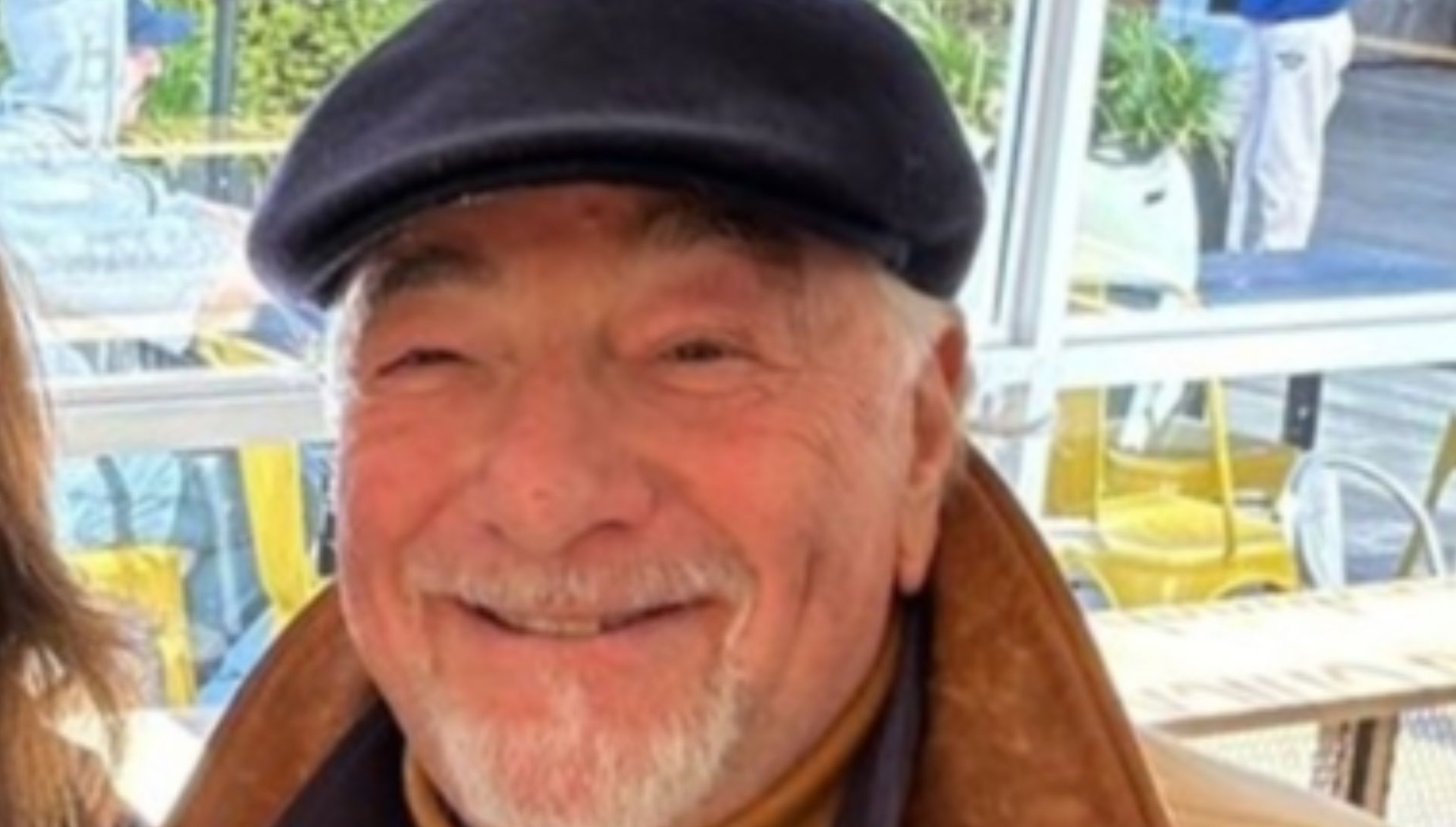 Savagenationweb, Wikimedia Commons
Savagenationweb, Wikimedia Commons
32. Beat Generation BFF’s
One of the men to shape Ginsberg’s early life was Gregory Corso, a fellow poet who had also spent three years in prison. Ginsberg developed strong feelings for Corso, who did not reciprocate them because of his sexual orientation. Despite that, Corso and Ginsberg would continue to associate, either together or with Jack Kerouac and William S. Burroughs. The two men maintained a friendship which lasted until their deaths.
31. Change of Scenery
In the late 1950s, Ginsberg forsook San Francisco and began traveling the world. After a brief stay in Morocco, Ginsberg set himself up in Paris, where he would be joined by several friends, including Burroughs. In fact, it was during his stay with Ginsberg in Paris that Burroughs put together his most famous literary work, Naked Lunch.
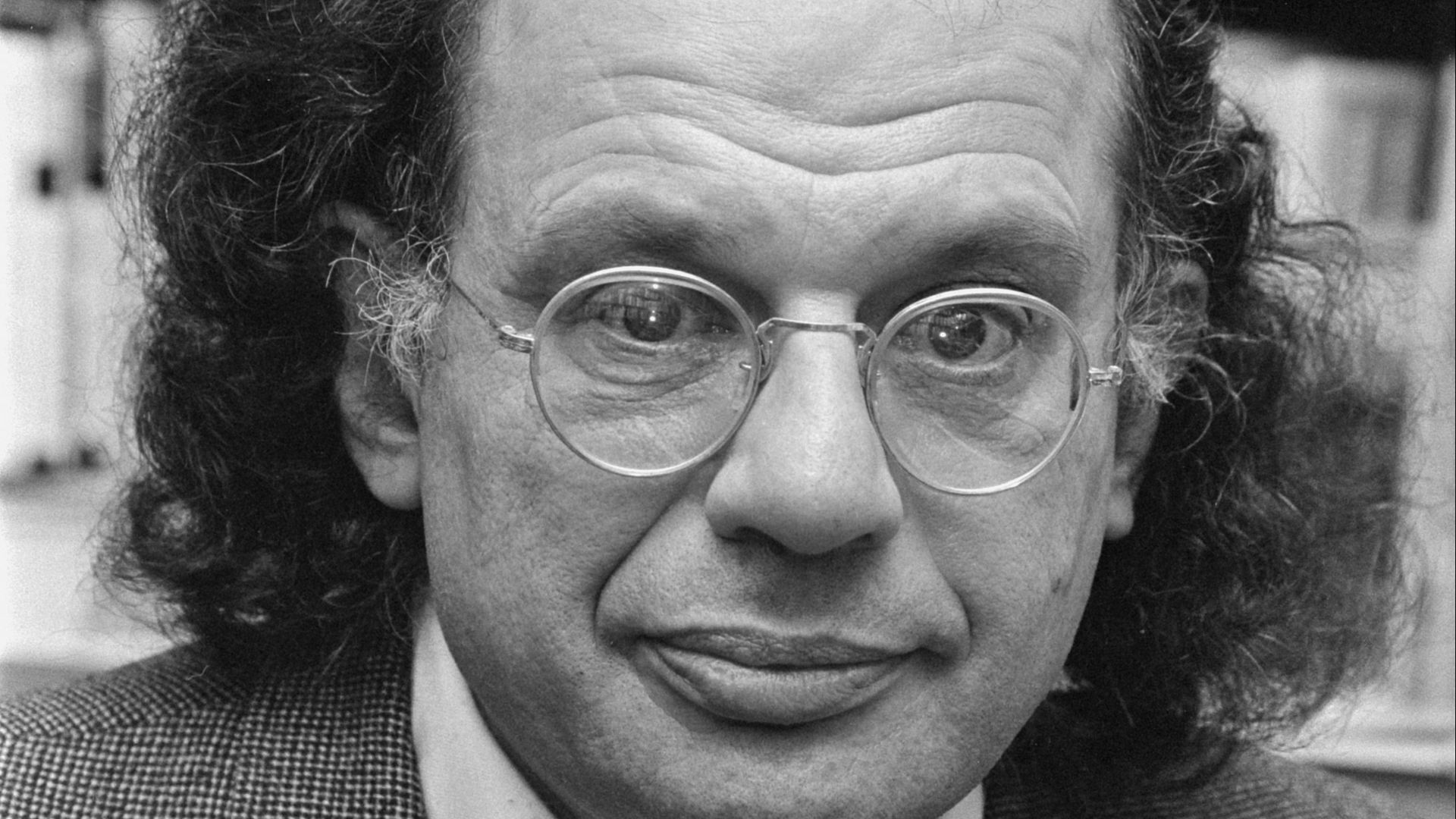 Hans van Dijk for Anefo, Wikimedia Commons
Hans van Dijk for Anefo, Wikimedia Commons
30. Brothers-in-Arms?
In 1945, Ginsberg joined the Merchant Marines in an effort to support himself while he was still at Columbia University. Interestingly, his friend and fellow Beat writer Jack Kerouac would also spend time in the Merchant Marines.
29. Let’s Call it a Draw
In 1973, Ginsberg released the poetry collection The Fall of America: Poems of These States 1965-1971. Most of the poems in this collection were political in nature, commenting on such events as the death of Che Guevara, the Moon Landing, and the atrocities committed by Americans in the Vietnam War. Ginsberg tied with Adrienne Rich for the 1974 National Book Award for this poetry collection (Rich won for her poetry collection Diving into the Wreck).
28. Obi Wan to his Luke
If you read Ginsberg’s first book, Howl and Other Poems, you might notice that it contains an introduction by none other than William Carlos Williams. Williams was a mentor to Ginsberg during his developing years as a poet. Williams was a well-known poet who utilized a modernist and imagist style with his work. This style would go on to inspire Ginsberg and several other members of the Beat Generation.
27. Go West, Young Man
Starting in the late 1940s, San Francisco underwent a significant artistic movement, spearheaded by such poets as Alan Watts and Ralph J. Gleason. This was later known as the San Francisco Renaissance. While Ginsberg wasn’t one of those who spearheaded this movement, his relocation to San Francisco in the 1950s led to him becoming acquainted with many of the most prominent members of the San Francisco Renaissance. His release of “Howl” would also put San Francisco further on the map in the world of avant-garde art.
26. Hipster Alert!
Reportedly, Ginsberg first met Lucien Carr when he heard Carr playing music by classical composer Johannes Brahms in his room. Ginsberg knocked on the door to find out just who would be playing that music (admittedly, nowadays such a choice in music would be even rarer than it was back then).
25. Call it an Artistic Autobiography
Just like Jack Kerouac, Ginsberg would claim that most, if not all, his work was biographical on some level or other. “Howl” is a prime example, as the poem refers to many individual people in Ginsberg’s life or famous events associated with his peers.
24. The Adventures of Bob and Al
Not surprisingly, Ginsberg had a close friendship with another counterculture legend: Bob Dylan. The two men would inspire each other’s artistic work over the years as they interacted and collaborated together.
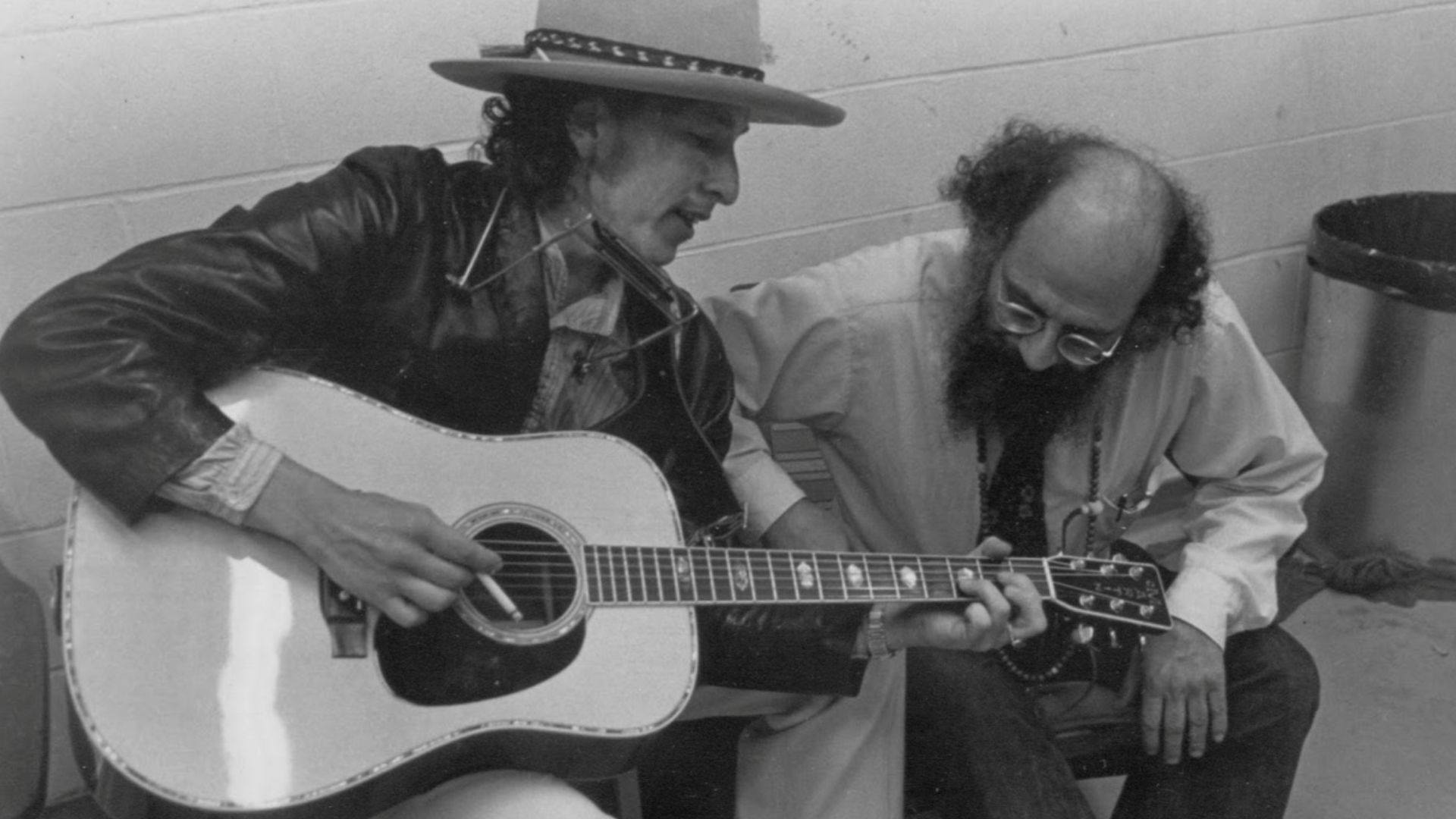 Elsa Dorfman, Wikimedia Commons
Elsa Dorfman, Wikimedia Commons
23. Gone but Not Forgotten
Before he fully embraced his homosexuality, Ginsberg had a few relationships with women. The most prominent of which was fellow Beat Generation poet Elise Cowen. Bonding over their mutual connection to Carl Solomon, Cowen and Ginsberg embarked on a romantic relationship in 1953. This would end when Ginsberg met Peter Orlovsky, but they would remain close for the rest of Cowen’s days. Sadly, Cowen’s life would be cut tragically short. Struggling with depression, and after being committed following several psychological breakdowns, Cowen would take her own life in 1962 at the age of twenty-eight. While most of her work was destroyed by a friend of her parents’ (they never approved of her work), dozens of her poems were eventually published by her friend Leo Skir.
22. It Paid the Bills
Before Ginsberg’s career as a writer kicked off with his book Howl and Other Poems, he was working in San Francisco as a market researcher.
21. When God Talks to You…
One of the more unique moments in Ginsberg’s life (and really, that’s a big statement to make) was the vision he experienced in 1948. While he was reading poetry by the author William Blake, Ginsberg experienced an auditory hallucination which allegedly “lasted several days.” Ginsberg would maintain that this experience led him to hear the voice of God. He would also insist that it was not brought about by drug use—though he would later try to recapture the experience through drug use.
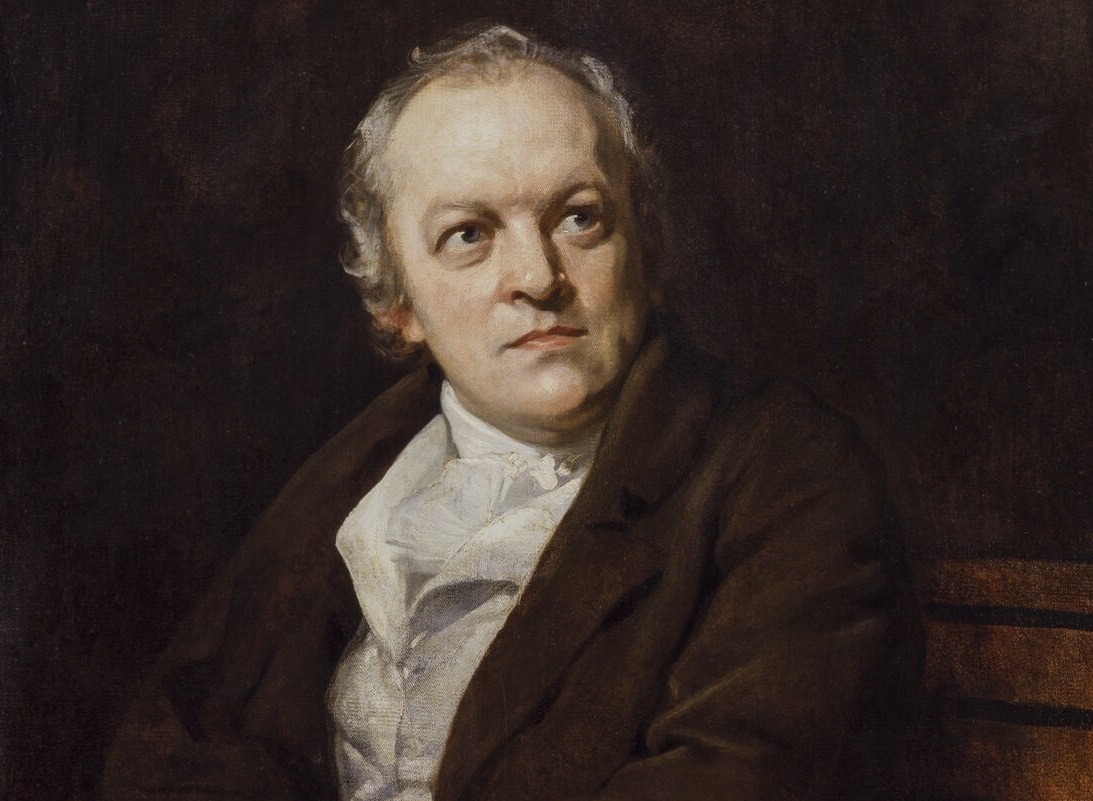 Thomas Phillips,Wikimedia Commons
Thomas Phillips,Wikimedia Commons
20. Love of My Life
In 1954, Ginsberg was in San Francisco when he met Peter Orlovsky, a young man who was working as a painting model for Robert La Vigne. The two men fell passionately in love, and Ginsberg would encourage Orlovsky to pursue his own career as a poet. This would lead Orlovsky to teach poetry at the Naropa Institute’s Jack Kerouac School of Disembodied Poetics in Colorado. Ginsberg and Orlovsky would remain close partners until Ginsberg’s death.
19. My Trip Out East
In the early 1960s, Ginsberg would travel to India with his partner, Peter Orlovsky. Ginsberg lived in such places as Calcutta and Benares for a year, and he formed friendships with Indian poets such as Sunil Gangopadhyay. Another one of Ginsberg’s associates was Pupul Jayakar, whose political power was crucial in preventing Ginsberg from getting expelled from the country.
18. Tune In, Drop Out
Unlike Kerouac, who despised hippies, Ginsberg openly embraced the hippie movement of the 1960s. Amongst many others, Ginsberg would form friendships with such figures as Ken Kesey (who wrote One Flew Over the Cuckoo's Nest) and Timothy Leary (a doctor psychologist who advocated the therapeutic use of psychedelic drugs). Ginsberg was also present for the celebration of psychedelic drugs known as the Human Be-In, which was held in San Francisco in 1967.
17. Secret Hero of These Poems
One of the most famous figures of the Beat Generation was Neal Cassady. Not only was he the inspiration for several characters in Kerouac’s novels (specifically Dean Moriarty in On the Road), he was also named or referenced in Ginsberg’s poetry. In fact, Ginsberg’s relationship with Cassady was frequently sexual too. Keep in mind that this was also when Cassady was drifting through multiple relationships with women at the same time. Small wonder that Ginsberg refers to Cassady in “Howl” as “…cocksman and Adonis.”
16. A Triumph for Free Speech
“Howl” was immediately controversial for its frank descriptions of sex, heterosexual and otherwise. In 1957, hundreds of published copies of the poem were seized by police. A couple months later, publisher Lawrence Ferlinghetti was arrested. A trial was held to determine whether “Howl” was obscene or not, which led to widespread publicity and media attention. By the end of the trial, no fewer than nine literary experts had been brought in to testify, Ferlinghetti was found not guilty, and the poem was deemed to have “redeeming social importance.”
15. Hunter S. Thompson Would Have Approved
One of the most important inspirations for Ginsberg’s “Howl” was a vision he experienced after he had taken peyote. On the 17th of October 1954, Ginsberg was in San Francisco when he hallucinated that the Sir Francis Drake Hotel had morphed into “the monstrous face of a child-eating demon.” This terrifying spectacle would later inspire the monster known as Moloch in “Howl.”
14. Stop the War!
Ginsberg, along with many others of his generation, was actively political during the Vietnam War. When the philanthropic organization RESIST issued their anti-war declaration “A Call to Resist Illegitimate Authority,” Ginsberg was one of many writers (including Norman Mailer and Noam Chomsky) to sign his name under it in solidarity. Ginsberg also declared that he would “refuse tax payments in protest against the Vietnam War.”
13. Is This a Crossover?
In further action against the Vietnam War, Ginsberg joined many others in protest at the 1972 Republican National Convention, including Vietnam War veteran Ron Kovic (who would later write Born on the Fourth of July, which was adapted into Oliver Stone’s Oscar-winning film).
12. And Starring…
In 2010, Ron Epstein and Jerry Friedman directed the film Howl, which depicts a young Ginsberg coming into his own as a poet, as well as the obscenity trial which stemmed from Ginsberg’s poem “Howl.” It also presents a series of animated sequences over Ginsberg reading “Howl.” James Franco stars as Ginsberg, with Aaron Tveit as Peter Orlovsky.
11. Potter the Poet
Ginsberg’s time as a student, coinciding with the controversial murder of David Kammerer by Lucien Carr, was adapted into the film, which came out in 2013. Ginsberg was played by Daniel Radcliffe, Lucien Carr was played by Dane DeHaan, and Kammerer was played by Michael C. Hall. The film’s cast also included Jack Huston as Jack Kerouac and Ben Foster as William S. Burroughs.
10. Don’t Test Me
Ginsberg would often do public readings of “Howl,” which only added to the poem’s prestige. During one of these public readings, a member of the audience openly criticized Ginsberg by challenging whether he was truly determined to “going naked in the world.” Much to the surprise of everyone present, Ginsberg one-upped the heckler by taking off his clothes on the stage!
9. Watching My Own Biography
Ginsberg was one of those rare people who got to enjoy seeing a film made about them within their lifetime. In 1993, Jerry Aronson made a documentary titled Life and Times of Allen Ginsberg. The documentary chronicles Ginsberg’s life up until the present day, when Ginsberg was in his mid-60s and already looking towards his own mortality. Ginsberg was able to see the film himself before he died a few years later. In 1997, Aronson went back to his film and added an epilogue depicting Ginsberg’s tombstone over a recording of Ginsberg’s “New Stanzas for Amazing Grace,” done by Paul Simon.
8. Divided in Death
When Ginsberg died, he was cremated as per his wishes. Also, again as per his wishes, his ashes were divided into thirds and given separate resting places. One third was buried with his family in New York, and another third was buried in India. When his former lover, Peter Orlovsky, passed away, the final third of Ginsberg’s ashes were buried alongside him in Colorado.
7. Hare Krishna
Ginsberg was a longtime fan of Buddhism, studying it as far back as 1950. He also picked up Krishnaism and would incorporate holy chanting into his poetry during the 1960s. At several famous events, such as the 1970 Black Panther rally at Yale or the 1968 Democratic Convention in Chicago, Ginsberg was present, chanting “Om,” sometimes for hours on end.
6. Silence Kills
Ginsberg became famous for using blunt and straightforward language to describe subjects considered to be taboo, and it got his work into quite a bit of trouble (more on that later). More than once in his life, he was asked why he was so open about these topics. Ginsberg would always use the subject of his friend Herbert Huncke as an example. A fellow Beat Generation writer, Huncke long suffered from his addiction to heroin, but he was unable to get much help because the very idea of heroin was too taboo to discuss in polite society.
5. Search for Closure
Ginsberg was forewarned of his declining health and impending death. Upon his final return from the hospital, Ginsberg took out his address book and telephoned everyone in it to make his final goodbyes. While some of his final conversations with people were reported to have been optimistic, others were far sadder in nature, and occasionally drove Ginsberg to tears. One of these people who grieved for Ginsberg on their final talk with him was famous actor Johnny Depp.
4. Mommy Dearest
Ginsberg’s mother, who would be referenced frequently in his poetry, was a fervent member of the Communist Party in the United States. Sadly, Naomi also suffered from a psychological condition (though it was never successfully diagnosed) that caused her to suffer from paranoid delusions, and she would attempt suicide on at least one occasion. For most of Ginsberg’s youth, she was kept in mental institutions, where she was also lobotomized (fans of Bojack Horseman will have an idea of the implications of lobotomy).
 Why BoJack Horseman is the Best Thing That Ever Happened - Part 2 by Schaffrillas Productions
Why BoJack Horseman is the Best Thing That Ever Happened - Part 2 by Schaffrillas Productions
3. Last Words
Naomi died in 1956, just a year after her son’s controversial poem “Howl” was published. Her final letter to Ginsberg was in response to his sending her a copy of “Howl.” She reportedly insisted, among other things, that Ginsberg avoid drugs and get himself married. If only the US government had allowed Ginsberg to marry the man he loved, he might have been able to take his mother’s advice.
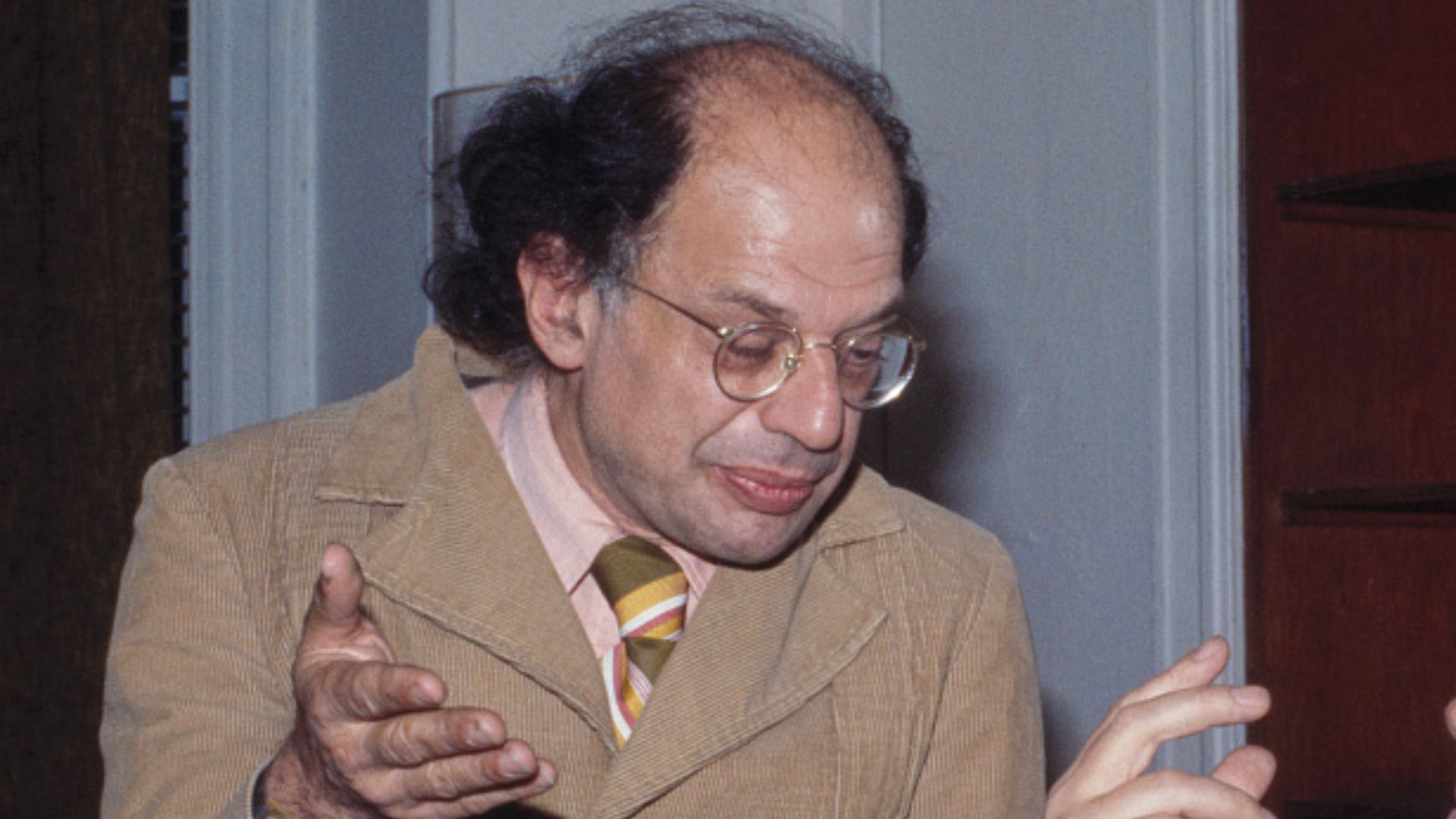 Bernard Gotfryd, Wikimedia Commons
Bernard Gotfryd, Wikimedia Commons
2. Censored Successfully
One of the most shocking incidents in the history of the Beat Generation was Lucien Carr’s killing of David Kammerer, an older man who stalked Carr for much of his life. Whether they had had a consensual or forced relationship remains uncertain, as is the question of whether Carr killed Kammerer in self-defense or not. Regardless, Ginsberg was affected enough by the incident that he began writing a book about it soon after. Titled The Bloodsong, Ginsberg was persuaded by a Columbia University professor to abandon his project in case it would bring further scandal and bad press against the school.
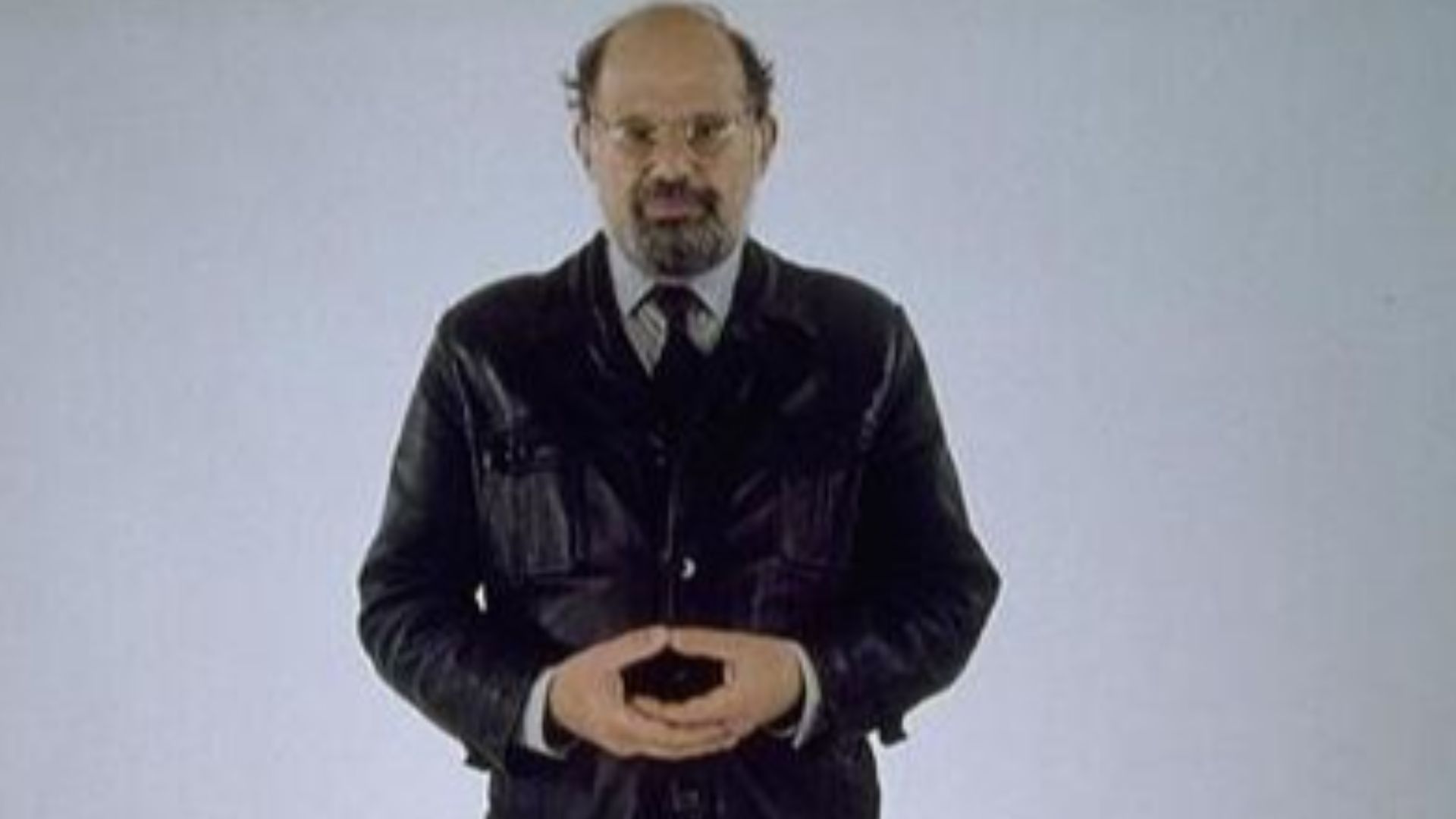 Elsa Dorfman, Wikimedia Commons
Elsa Dorfman, Wikimedia Commons
1. For Mother
"Howl" wasn't the only poem in which Ginsberg referenced his mother—he also wrote an epic poem titled Kaddish for Naomi Ginsberg (1894-1956). For those of you unsure, the Kaddish is a traditional Jewish mourning prayer, which Naomi was unable to receive while she was institutionalized. Excuse us while we find out who’s cutting those onions.
Sources: 1, 2, 3, 4, 5, 6, 7, 8, 9, 10, 11, 12, 13, 14, 15, 16, 17, 18, 19, 20

